Comparison of the quality of photos taken on phones with different configurations of sensors
Currently, almost every month a smartphone comes out in which another vendor necessarily makes “revolutionary” changes, starting with the appearance (material, color, shape, dimensions) and ending with the stuffing (processor, display, cameras, various interfaces) . It so happened that I am a supporter of the all-in-one device, if the application scenario of the equipment is not related to professional activity or does not severely limit the functionality that interests me.
One of the main characteristics of the smartphone for me is the camera. In fact, I didn’t see anything special on the market after the appearance of Nokia Lumia 1020. No one could reach the level 1020, which has a 1 / 1.5 inch matrix with a resolution of 41MP (perhaps in a number of scenarios, they cannot reach it now). From year to year, all vendors released similar devices, just slowly increasing the number of megapixels, while the physical size of the sensor remained, as a rule, unchanged, which in turn, in addition to an increase in the level of detail (which by the way was not always high), brought many minuses, for example , minimum lighting requirements, a large amount of noise, distortion, etc. Since every year the processors in mobile devices become more and more productive, smartphones are overgrown with various “intellectual” functions. Perhaps the best Google spotted here with its series of Google Pixel phones. The company introduced its HDR mode and is constantly improving it.
However, the situation began to change literally in the last year or two. When manufacturers concluded that one of the most effective ways to improve image quality is to increase the number of sensors. One of the best-selling phones in this segment is the Huawei P20 Pro, which I own. I will not begin to describe its features and characteristics, since it is easily possible to find all the available information on the network. It is worth noting that the amount of information is not that much, but even too much. For me, the difference in the photo is obvious, since I “switched” to the Huawei P20 Pro from the Sony Z3 Dual, which I purchased in 2015.
At the same time, I always wanted to somehow more fully and independently compare devices with one and several cameras within the framework of 1-2 generations. And the opportunity I turned up. I have one friend who is actually a fan of Sony, and frankly dislikes Chinese equipment manufacturers.
')
It was agreed to compare two devices - Huawei P20 Pro and Sony XZ2 in the following modes (maximum two photos per mode):
1a) Test the camera on auto settings, without any manipulation.
1b) Test the camera with any manual settings.
1c) Test the camera in maximum resolution in RAW mode with any subsequent manipulations, including in a third-party application.
2) Test the camera in the mode of continuous shooting when the object is moving (after searching for moving objects, stopped at the cars that go on the road).
3a) HDR mode in the presence of dark and light areas in the picture.
3b) HDR mode under insufficient lighting conditions.
4) night mode, if any.
5) Macro.
6) 3x, 5x, 10x zoom.
7) bokeh mode.
8) Test the camera on auto settings when walking *.
After testing began, an idea arose in parallel to check the quality of AI work, which, in my opinion, more often spoils the picture than improves it.
Devices involved in testing:
Huawei P20 Pro (CLT-L29), f / w: 9.0.0.232 (C10E2R1P12)
Sony XZ2 (H8266), f / w: 52.0.A.8.25_0_0
The Huawei P20 Pro is 10Mp, while Sony has 12Mp.
Photos were very similar, the difference is difficult to see, even with the approach. At the same time, when approaching, it can be seen that Sony’s details are slightly higher. Affects higher resolution of the photograph. An interesting detail is that the Huawei P20 Pro is a little “green” picture, apparently this is the effect of the presence of a light filter with an RGGB scheme. In turn, Sony, as a rule, has “warmer” shades, and the same trees look more “autumnal” in the photo.
When you activate the AI in P20 Pro, the colors in the photo are very juicy, but much less natural. I note that AI on the latest firmware has become much less aggressive, and in some scenarios it can even be used.
In this scenario, I used the “Pro” mode, choosing 40Mp resolution. I did not do any other manipulations, ISO settings, shutter speeds, EV, etc. were on the AUTO.
The owner of the Sony XZ2 device also chose max. resolution and lowered EV, judging by the properties of the image.
40Mp mode in Huawei in my opinion is the most controversial mode for the device. On the one hand, a higher resolution should give higher detail in the output and additionally there is an opportunity to get a picture in RAW. On the other hand, the regime has significant limitations and shortcomings.
Since habrastorage has limitations on photo size, I posted links to photos on my Google Drive.
When creating a photo, the owner of the Sony Xperia XZ2 apparently decided to get a "dark picture" and more natural colors to focus on a dark area, and compensate for the light correction "-0.33 EV". The photo turned out really more natural, but a clear light is visible.
Despite the darker picture, the details of Huawei are slightly higher, the various inscriptions are more clearly visible. However, with more than 2x difference in the resolution of the photo, the differences in detail are not great. The design features of the lens and strong compression significantly reduce the potential of the camera from Huawei.
As in the previous mode, when you activate the AI in P20Pro, the colors in the photo are very juicy, but less natural.
Due to limitations in the 40Mp mode of the P20 Pro, there would be no point in using this mode if it were not possible to get a photo in RAW format. The main advantage of which is that the image is very easy to edit with third-party applications. One distinguished user under the nickname AS4U on the forum w3bsit3-dns.com has created very high-quality profiles for the Huawei P20 Pro, which can be used in Adobe Lightroom CC. Despite the small number of profiles, they cover the main shooting scenarios.
I used the “AS4U P20 Pro 25 OneClick” profile in Adobe Lightroom CC, raised a bit the parameters of detail, sharpness, contrast, slightly shifted the tint and significantly increased the clarity. It took me less than one minute to edit. Next made a compression in JPEG with the highest quality.
I am sure that if you experiment with quality, it is possible to achieve better results.
Colors after processing RAW through Adobe LightRoom less bright, but much more natural.
The detail is also slightly higher when compressed using Adobe LightRoom.
Serial photography is a very effective tool for taking photos in conditions where there is a high probability of “smearing”. For example, when the object on which the device focuses is moving, or when the person himself moves with the device to keep the object in the frame, or a combined scenario.
In this case, smartphones detected cars and accompanied them in such a way that the vehicles were always in the frame.
In this case, the "soap picture" from Sony can be seen even without an increase. It is worth noting that perhaps this is just not a very successful sample from the owner of the Sony XZ2, they chose rather hastily. But in my opinion, Huawei has a weighty advantage because of the large 1 / 1.73 matrix and 2x2 binning mode. As a result of these features, the shutter speed was 1/900 seconds vs. 1/400 seconds, which significantly reduces the likelihood of "Grease".
With the increase, the difference is already obvious.
The owner of the Sony XZ2 insists that blurring is an “artistic effect,” but I believe that blurring is primarily due to the physical limitations of the Sony smartphone. As a result, I decided to add a comparison of the same car that was “tracked” when shooting.
Perhaps one of the most relevant modes for me. Very often I come across a situation where there are some sources of light on the stage (sun, flashlight, reflection from the object, etc.) or different areas have a big difference in lighting (the scene is in the room opposite the window during the day). I certainly would like to compare Huawei with Google Pixel. But unfortunately, I don’t have such a device.
This is the case when the difference can be easily seen with the naked eye.
In this case, Sony has visible glare and less quality shadow workout.
It is easy to see the difference in the correct display of colors, as well as clouds are clearly visible.
Even after viewing the tests with HDR in DxOMark, I immediately saw a poor HDR test. I thought it was inaccurate information, or just a bad photo. But when I saw the results with my own eyes, I became convinced that the dynamic range is the weak side of Sony smartphones.
In this mode, a comparison was made Huawei P20 Pro (RHDR and Night) and Sony XZ2 actually at night.
The difference can also be seen very clearly.
The “Night” mode of the P20 Pro allows you to see what is inside the trams.
Unfortunately, it was difficult to find something sensible for macro photography, in the end we decided to take a picture on the leaves, on a tree branch.
I decided to use the “Aperture” modes (for the experiment) and “Auto” with AI enabled at 10MP.
After playing with the aperture after creating the photo, I realized that for shooting objects near, it is practically useless. Even if you set the option to 0.95, the blur will be stronger than the usual Auto.
Perhaps this is the rare case when AI really made the picture more “interesting”, albeit less realistic.
In this photo, the picture from Sony turned out to be more realistic and slightly more detailed (primarily due to a higher resolution).
I decided not to take a photo in 40Mp mode in this scenario, relying on a wide dynamic range of 10Mp and it turned out how it turned out. I note that on Huawei it is also convenient to make macro using 3x optical zoom, the picture is very detailed. At work he used repeatedly, for example, to obtain markings of small parts on the board. But for the scenario of shooting a leaf on a tree, this mode is not very suitable.
Perhaps, almost all modern smartphones have at least 2 sensors on the reverse side. One of them is most often a telephoto lens with an increased focal length, which makes it possible to get better-quality images of objects at a remote distance.
The Huawei P20 Pro has 3 sensors: Main 40 megapixel, 8 megapixel telephoto with 3x optical zoom, b / w 20 megapixel.
The Sony XZ2 has only one 19MP sensor, which severely limits the capabilities of the device.
In the pictures that are posted above, the difference between Sony and Huawei is clearly visible.
In my opinion, this is one of the most ambiguous modes in any smartphone.
In the photo, Sony has noticeably more "sharpe" and a more "warm" less natural tone.
I decided to conduct a small experiment, did not remove the “beautification” settings and disable AI on Huawei. In my opinion, the result was very good!
The photo taken on Sony in this case is more natural, and the software did not quite correctly blur the background. Apparently, it affects the presence of only one sensor.
Brief conclusions:
Personal observations:
UPG: corrected several grammatical errors and added a photo with the car during serial shooting, where it is possible to compare the same areas of the moving object being tracked. Also added a photo of the devices themselves on request.
One of the main characteristics of the smartphone for me is the camera. In fact, I didn’t see anything special on the market after the appearance of Nokia Lumia 1020. No one could reach the level 1020, which has a 1 / 1.5 inch matrix with a resolution of 41MP (perhaps in a number of scenarios, they cannot reach it now). From year to year, all vendors released similar devices, just slowly increasing the number of megapixels, while the physical size of the sensor remained, as a rule, unchanged, which in turn, in addition to an increase in the level of detail (which by the way was not always high), brought many minuses, for example , minimum lighting requirements, a large amount of noise, distortion, etc. Since every year the processors in mobile devices become more and more productive, smartphones are overgrown with various “intellectual” functions. Perhaps the best Google spotted here with its series of Google Pixel phones. The company introduced its HDR mode and is constantly improving it.
However, the situation began to change literally in the last year or two. When manufacturers concluded that one of the most effective ways to improve image quality is to increase the number of sensors. One of the best-selling phones in this segment is the Huawei P20 Pro, which I own. I will not begin to describe its features and characteristics, since it is easily possible to find all the available information on the network. It is worth noting that the amount of information is not that much, but even too much. For me, the difference in the photo is obvious, since I “switched” to the Huawei P20 Pro from the Sony Z3 Dual, which I purchased in 2015.
At the same time, I always wanted to somehow more fully and independently compare devices with one and several cameras within the framework of 1-2 generations. And the opportunity I turned up. I have one friend who is actually a fan of Sony, and frankly dislikes Chinese equipment manufacturers.
')
It was agreed to compare two devices - Huawei P20 Pro and Sony XZ2 in the following modes (maximum two photos per mode):
1a) Test the camera on auto settings, without any manipulation.
1b) Test the camera with any manual settings.
1c) Test the camera in maximum resolution in RAW mode with any subsequent manipulations, including in a third-party application.
2) Test the camera in the mode of continuous shooting when the object is moving (after searching for moving objects, stopped at the cars that go on the road).
3a) HDR mode in the presence of dark and light areas in the picture.
3b) HDR mode under insufficient lighting conditions.
4) night mode, if any.
5) Macro.
6) 3x, 5x, 10x zoom.
7) bokeh mode.
8) Test the camera on auto settings when walking *.
Note
It is worth noting that the regime was actually remembered after the tests. Made only one frame of the available two without focusing, it turned out to be a blur.
After thinking about the scenario, I came to the conclusion that when moving, one way or another, the person would use “serial shooting” (which was tested) to eliminate the risk of getting a “bad shot”, and finally decided that there was no point in continuing such a test.
After thinking about the scenario, I came to the conclusion that when moving, one way or another, the person would use “serial shooting” (which was tested) to eliminate the risk of getting a “bad shot”, and finally decided that there was no point in continuing such a test.
After testing began, an idea arose in parallel to check the quality of AI work, which, in my opinion, more often spoils the picture than improves it.
Devices involved in testing:
Huawei P20 Pro (CLT-L29), f / w: 9.0.0.232 (C10E2R1P12)
Photo of the main camera

Sony XZ2 (H8266), f / w: 52.0.A.8.25_0_0
Photo of the main camera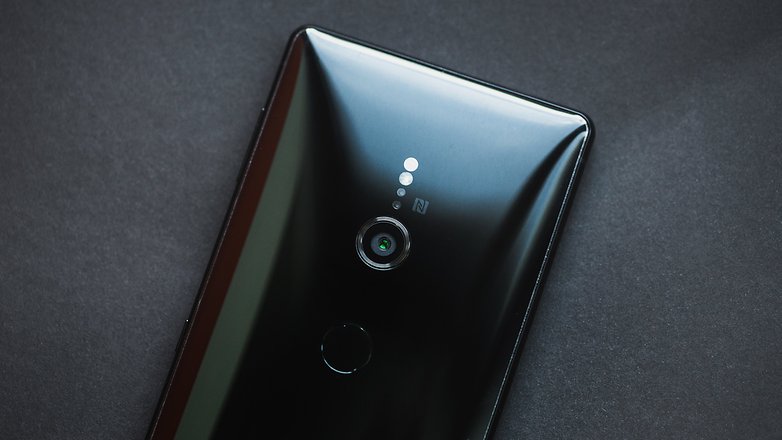

Test camera on AUTO settings, without any manipulations
The Huawei P20 Pro is 10Mp, while Sony has 12Mp.
Huawei, 10MP Auto, without AI, ISO 50, 1/861 s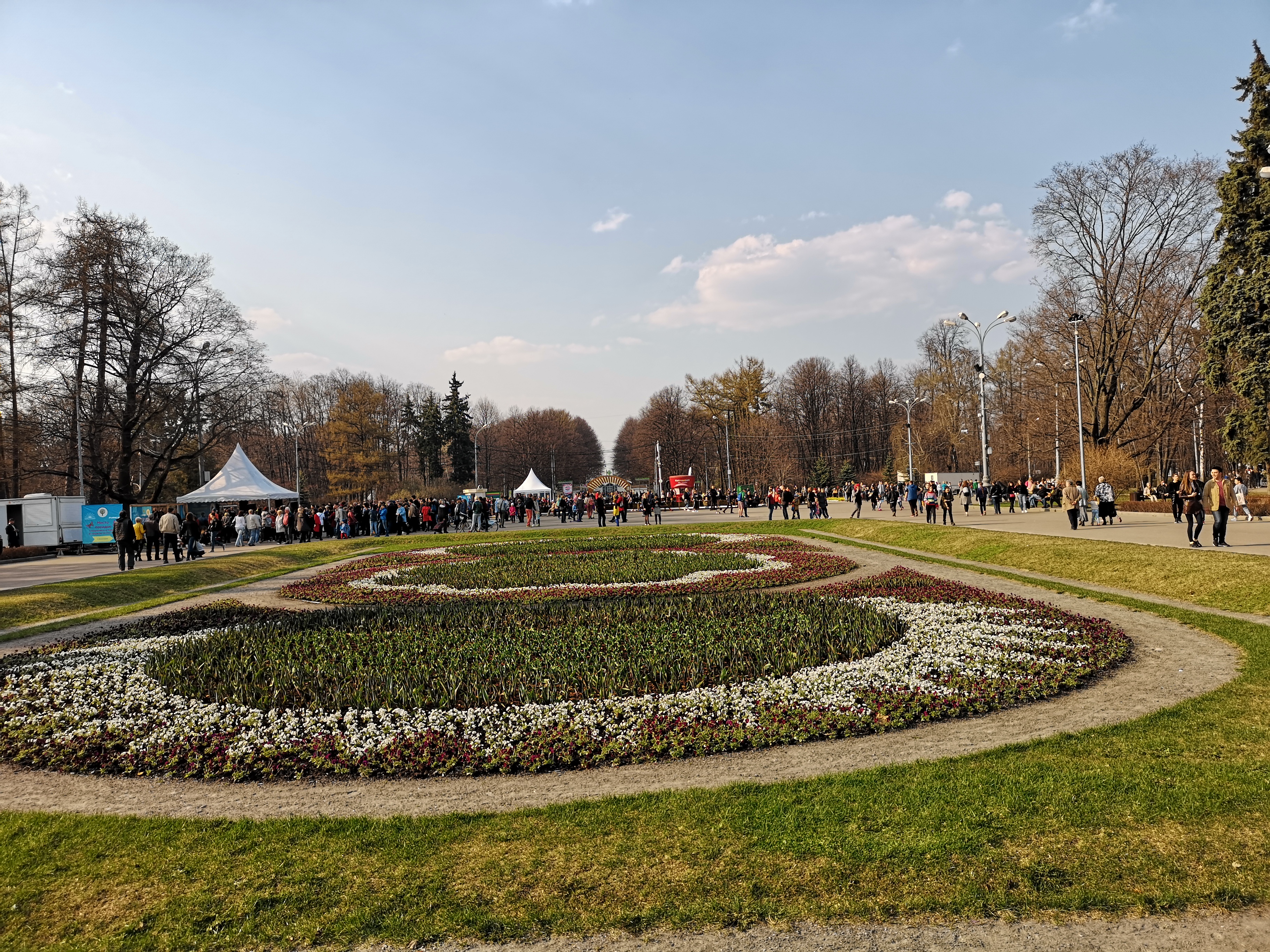

Huawei, 10MP Auto, with AI, ISO 50, 1/928 sec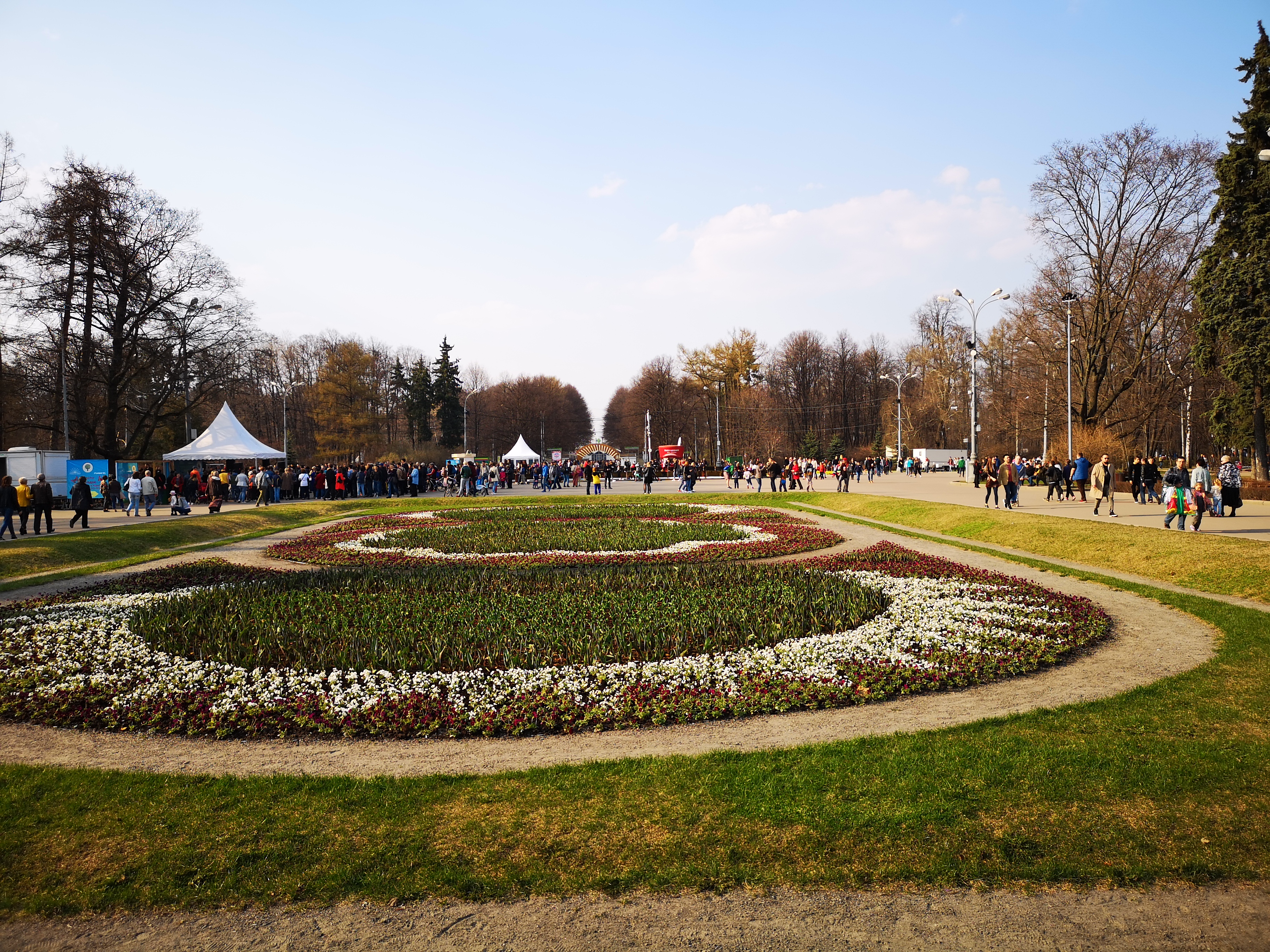

Sony, 12MP Auto, ISO 40, 1/800 sec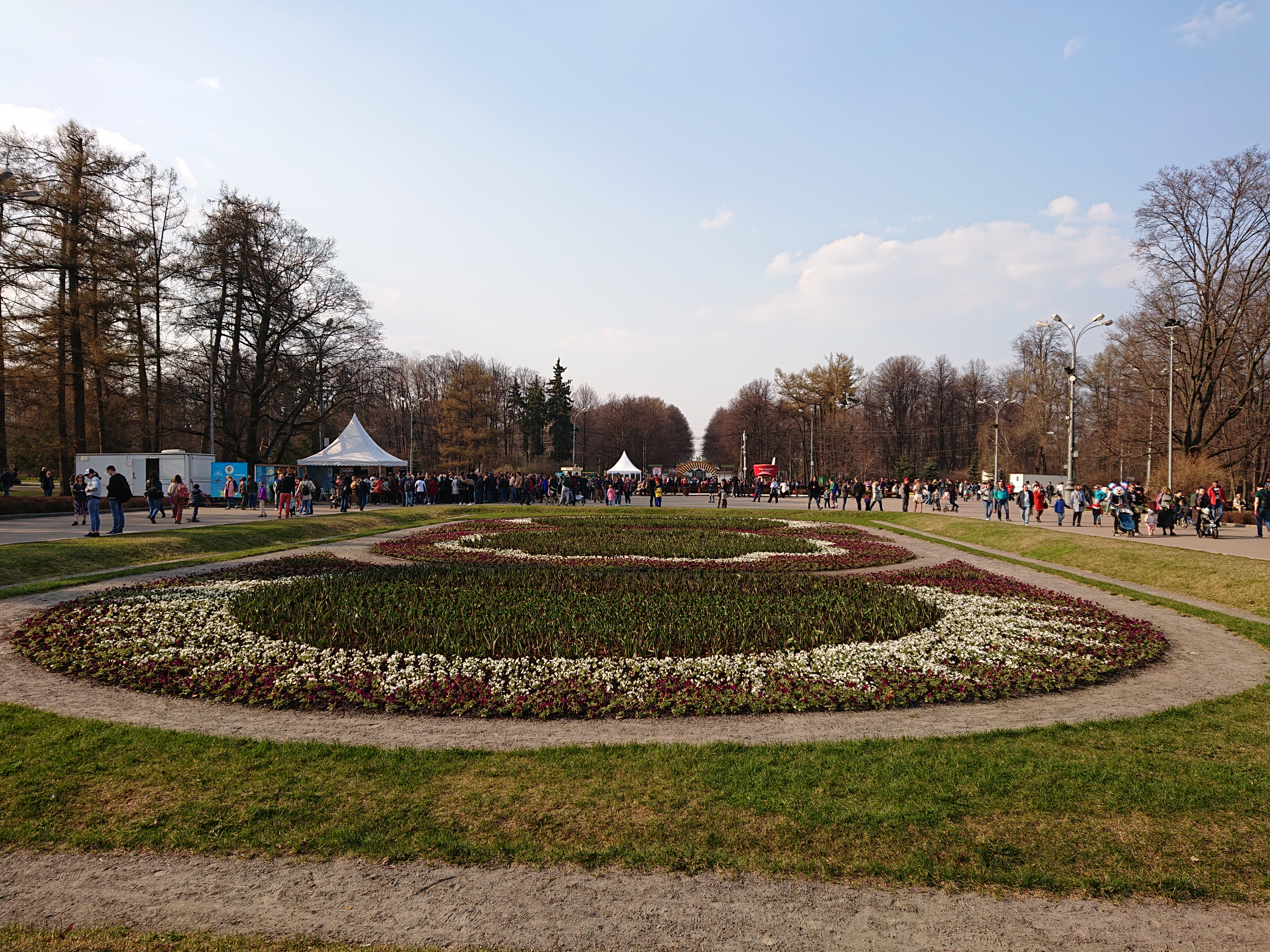

Compare 1, to the left of Huawei, to the right of Sony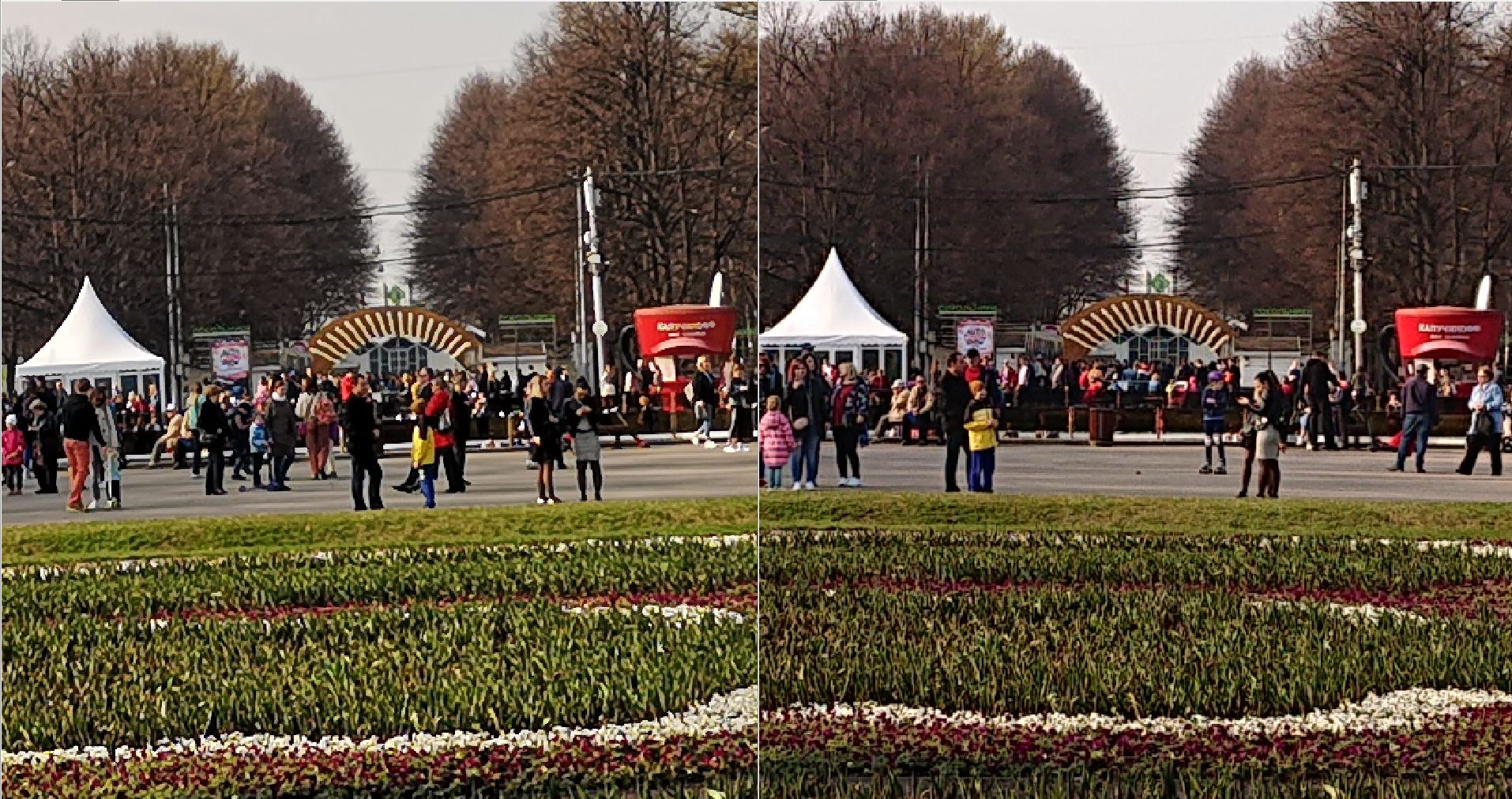

Compare 2, to the left of Huawei, to the right of Sony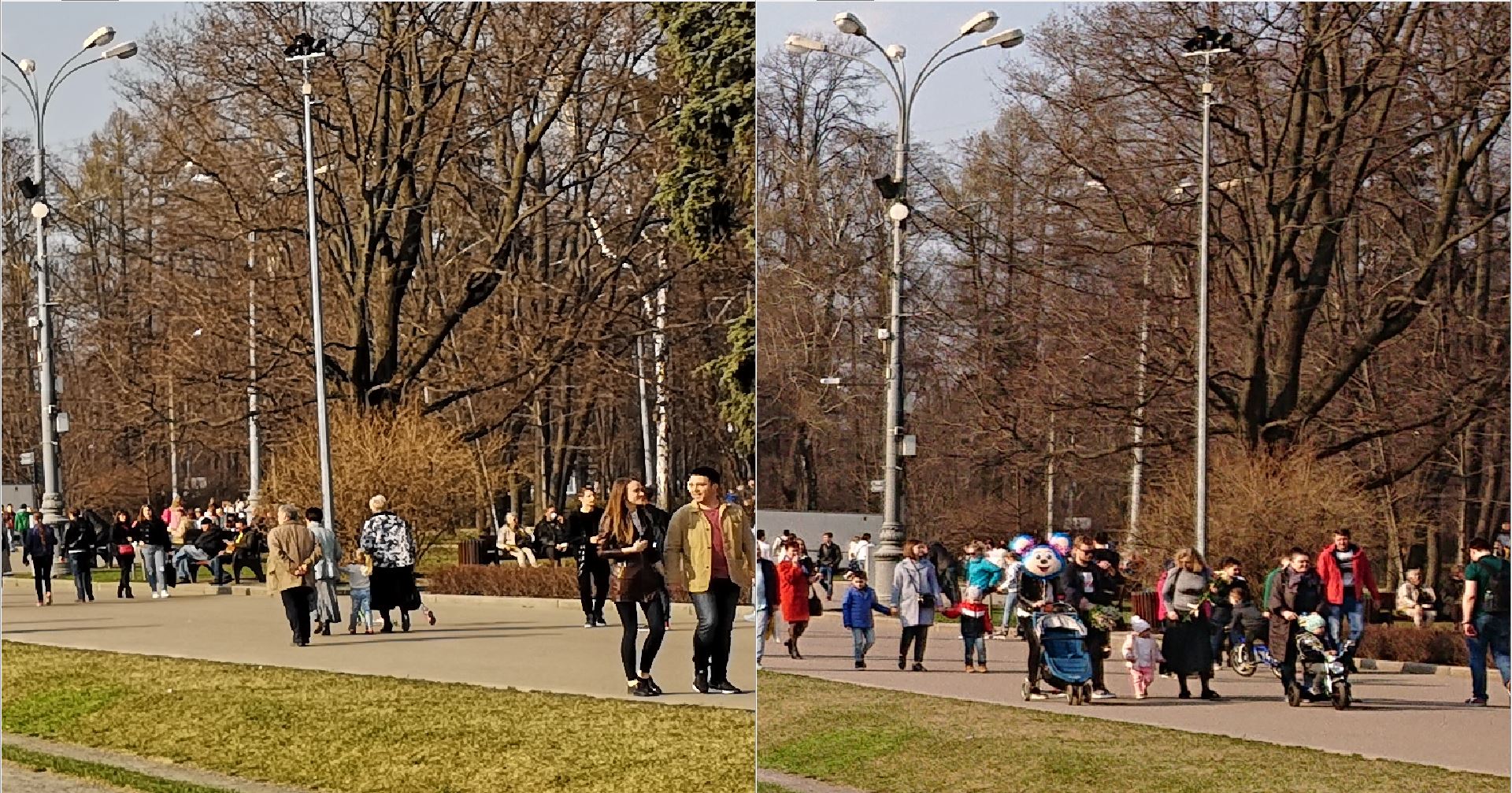

Photos were very similar, the difference is difficult to see, even with the approach. At the same time, when approaching, it can be seen that Sony’s details are slightly higher. Affects higher resolution of the photograph. An interesting detail is that the Huawei P20 Pro is a little “green” picture, apparently this is the effect of the presence of a light filter with an RGGB scheme. In turn, Sony, as a rule, has “warmer” shades, and the same trees look more “autumnal” in the photo.
When you activate the AI in P20 Pro, the colors in the photo are very juicy, but much less natural. I note that AI on the latest firmware has become much less aggressive, and in some scenarios it can even be used.
Test the camera with any manual settings
In this scenario, I used the “Pro” mode, choosing 40Mp resolution. I did not do any other manipulations, ISO settings, shutter speeds, EV, etc. were on the AUTO.
The owner of the Sony XZ2 device also chose max. resolution and lowered EV, judging by the properties of the image.
40Mp mode in Huawei in my opinion is the most controversial mode for the device. On the one hand, a higher resolution should give higher detail in the output and additionally there is an opportunity to get a picture in RAW. On the other hand, the regime has significant limitations and shortcomings.
- Perhaps the most important disadvantage is physical limitations. The 40MP sensor is limited by a relatively simple lens, which in turn eliminates the advantage of high resolution pictures, while adding chromatic aberrations. Although again, the latest firmware shows very good progress in eliminating the problem of distortion.
- Higher requirements for the availability of light sources (which is logical), and as a consequence a large amount of noise, with its lack.
- Strong compression in 40 megapixel mode, which actually makes this mode meaningless in a number of scenarios. On the latest firmware, the situation has been significantly improved, which is good, however, sometimes 40 MP photos are compressed to 7-8 MB in JPEG. For me, it remains a mystery why the manufacturer did not add an adjustment for the degree of compression.
- The inability to fully use the technology RHDR. Sometimes the “gluing together” is still activated with large drops of light and shadows (in AUTO mode), but the result is inferior to how it is implemented in the 10 megapixel mode.
Since habrastorage has limitations on photo size, I posted links to photos on my Google Drive.
Huawei, 40MP Auto, without AI, ISO 50, 1/1034 sec.
Huawei, 40MP Auto, with AI, ISO 50, 1/949 s
Sony, 19MP Auto, ISO 40, 1/500 sec
Compare 1, to the left of Huawei, to the right of Sony

When creating a photo, the owner of the Sony Xperia XZ2 apparently decided to get a "dark picture" and more natural colors to focus on a dark area, and compensate for the light correction "-0.33 EV". The photo turned out really more natural, but a clear light is visible.
Compare 2, to the left of Huawei, to the right of Sony

Compare 3, to the left of Huawei, to the right of Sony

Compare 3, to the left of Huawei, to the right of Sony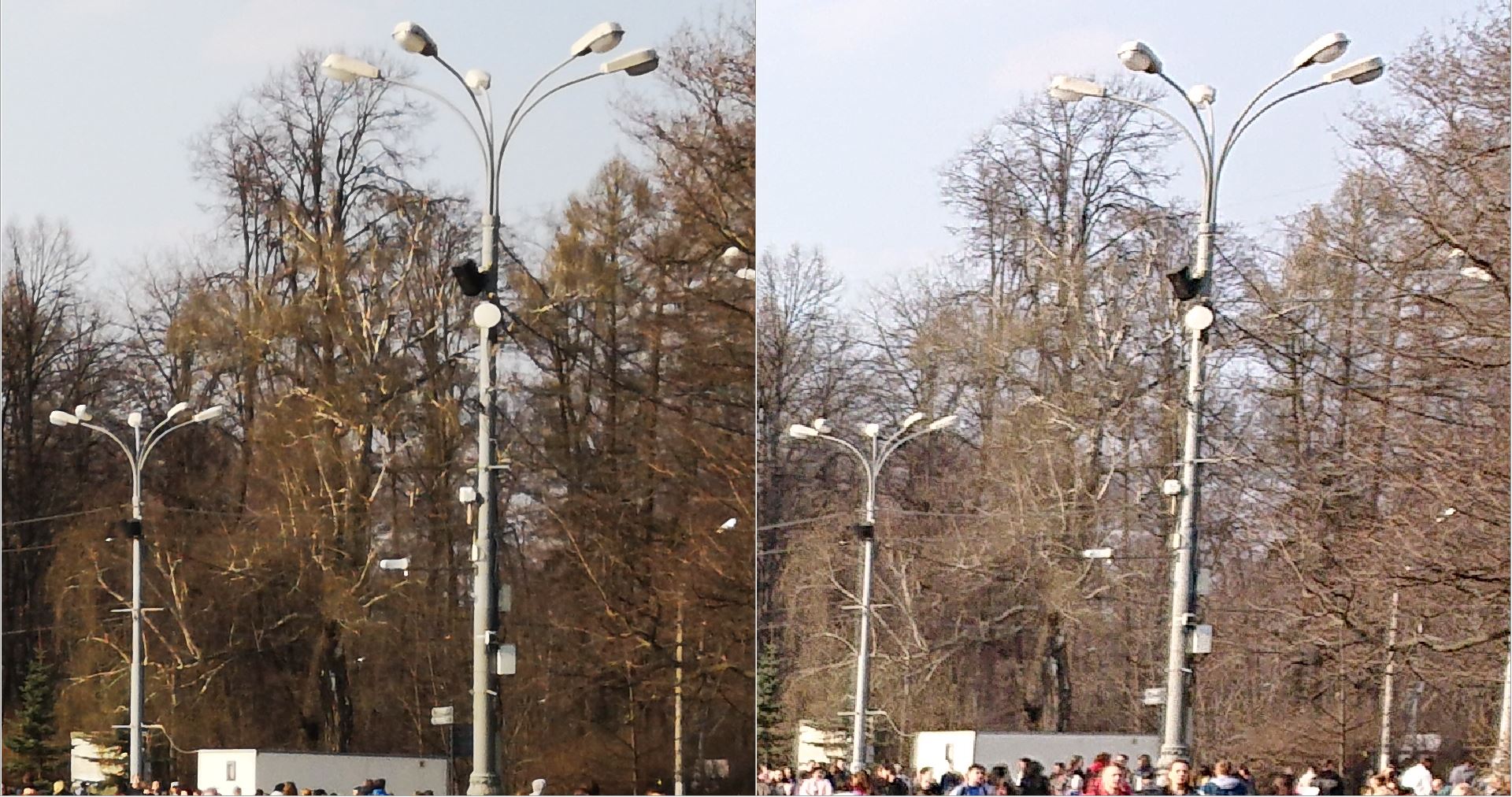

Despite the darker picture, the details of Huawei are slightly higher, the various inscriptions are more clearly visible. However, with more than 2x difference in the resolution of the photo, the differences in detail are not great. The design features of the lens and strong compression significantly reduce the potential of the camera from Huawei.
As in the previous mode, when you activate the AI in P20Pro, the colors in the photo are very juicy, but less natural.
Test the camera at maximum resolution in RAW and compression through Adobe Lightroom CC
Due to limitations in the 40Mp mode of the P20 Pro, there would be no point in using this mode if it were not possible to get a photo in RAW format. The main advantage of which is that the image is very easy to edit with third-party applications. One distinguished user under the nickname AS4U on the forum w3bsit3-dns.com has created very high-quality profiles for the Huawei P20 Pro, which can be used in Adobe Lightroom CC. Despite the small number of profiles, they cover the main shooting scenarios.
I used the “AS4U P20 Pro 25 OneClick” profile in Adobe Lightroom CC, raised a bit the parameters of detail, sharpness, contrast, slightly shifted the tint and significantly increased the clarity. It took me less than one minute to edit. Next made a compression in JPEG with the highest quality.
I am sure that if you experiment with quality, it is possible to achieve better results.
Comparison 1, Huawei compression on the left through the native application, Huawei compression on the right and add. processing via Adobe LightRoom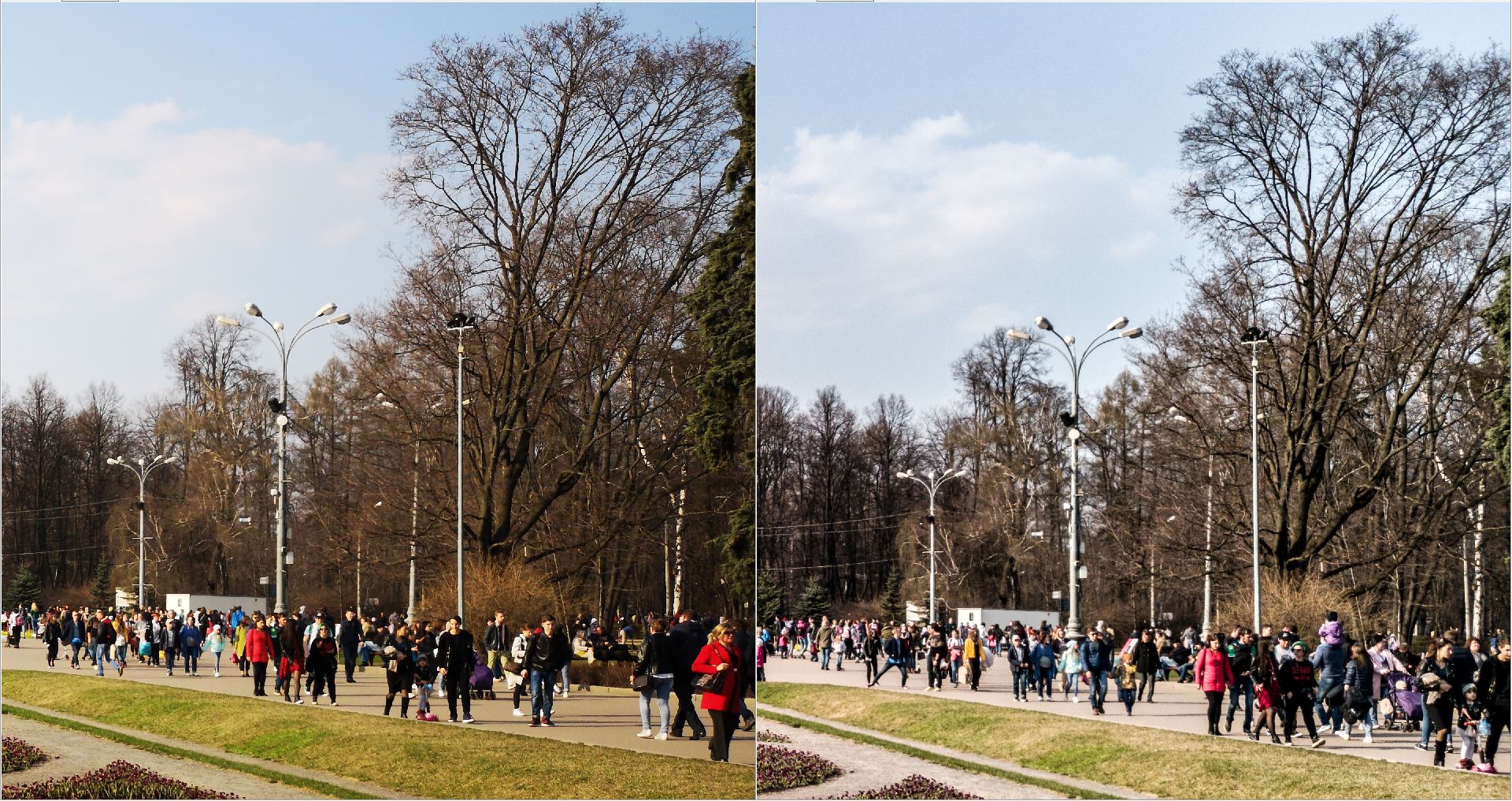

Colors after processing RAW through Adobe LightRoom less bright, but much more natural.
Comparison 2, on the left, Huawei compression via native application, on the right, Huawei compression and add. processing via Adobe LightRoom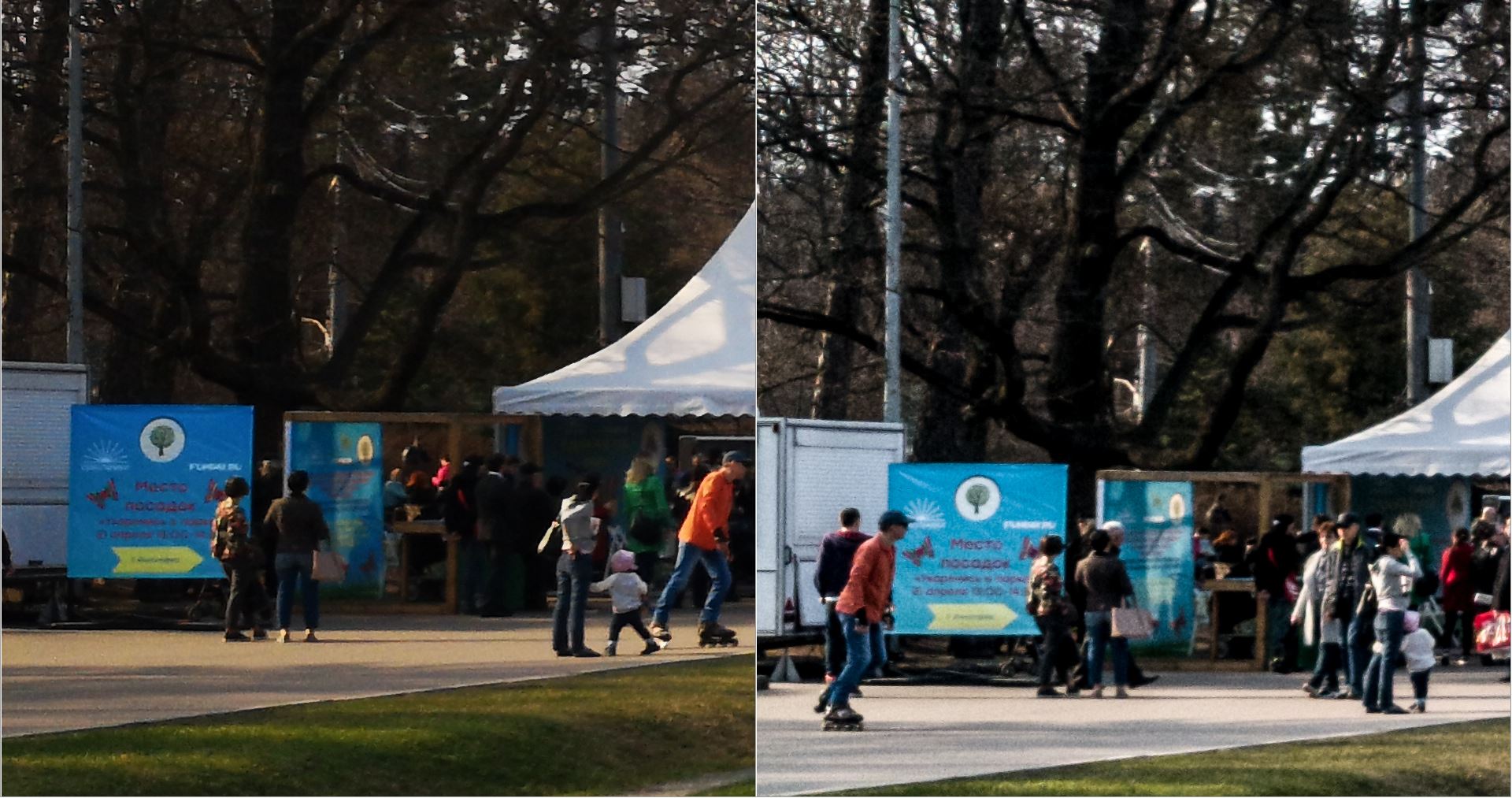

The detail is also slightly higher when compressed using Adobe LightRoom.
Test camera in continuous shooting mode when the object is moving
Serial photography is a very effective tool for taking photos in conditions where there is a high probability of “smearing”. For example, when the object on which the device focuses is moving, or when the person himself moves with the device to keep the object in the frame, or a combined scenario.
In this case, smartphones detected cars and accompanied them in such a way that the vehicles were always in the frame.
Huawei, 10MP Auto, Burst, no AI, ISO 100, 1/900 sec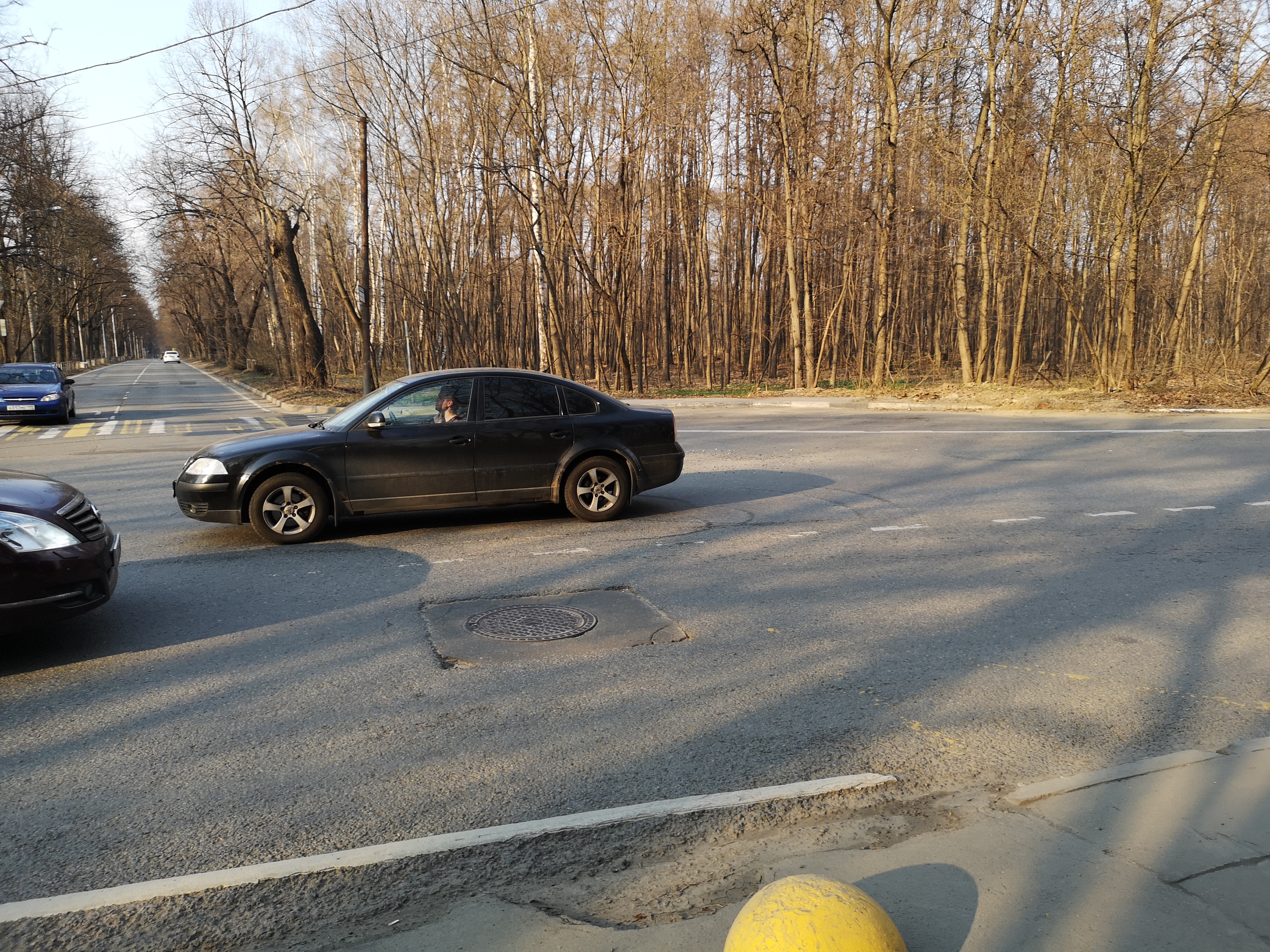

Huawei, 10MP Auto, Burst, no AI, ISO 100, 1/900 sec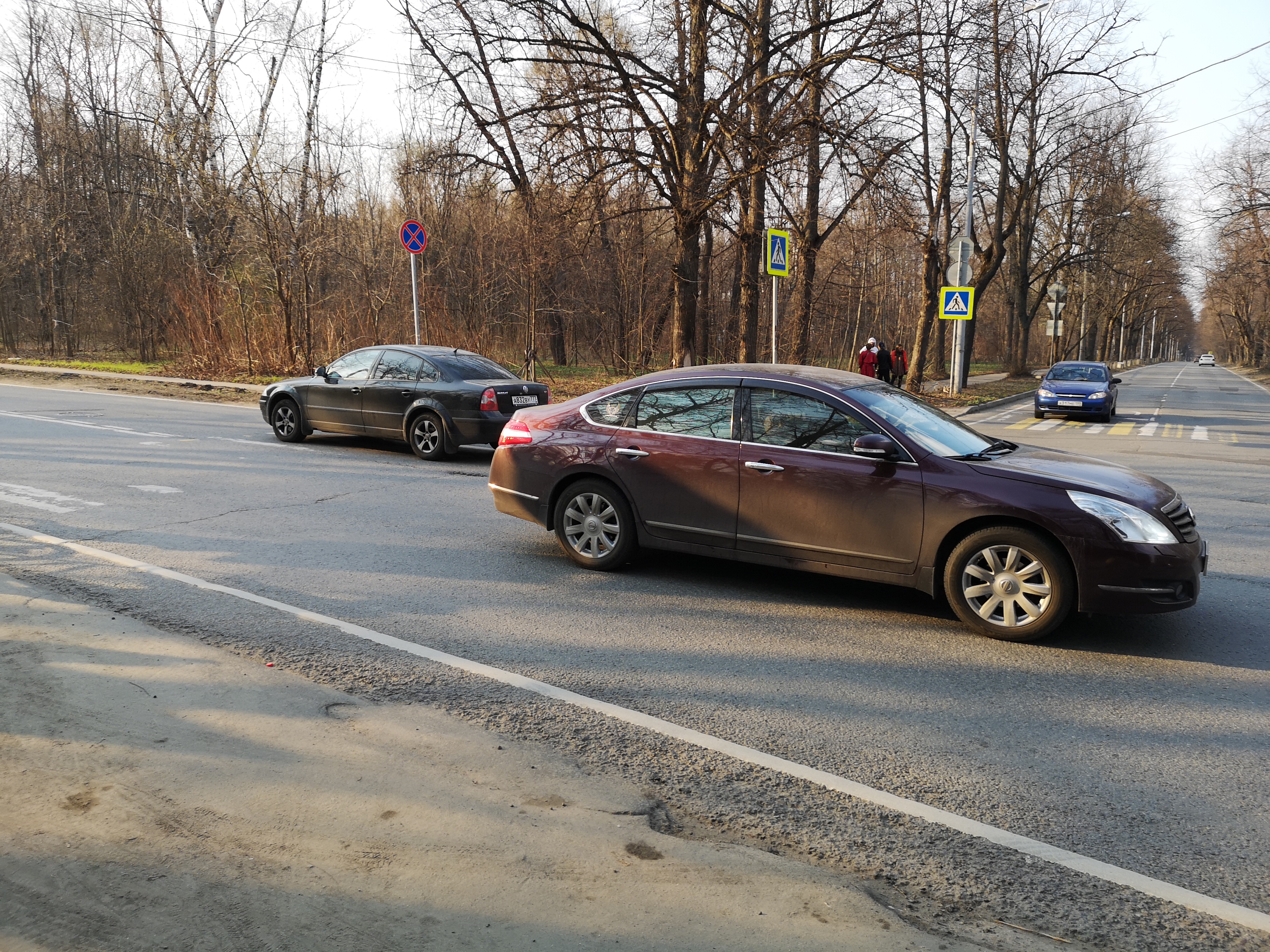

Sony, 12MP, Burst, ISO 40, 1/400 s

In this case, the "soap picture" from Sony can be seen even without an increase. It is worth noting that perhaps this is just not a very successful sample from the owner of the Sony XZ2, they chose rather hastily. But in my opinion, Huawei has a weighty advantage because of the large 1 / 1.73 matrix and 2x2 binning mode. As a result of these features, the shutter speed was 1/900 seconds vs. 1/400 seconds, which significantly reduces the likelihood of "Grease".
With the increase, the difference is already obvious.
Compare 1, to the left of Huawei, to the right of Sony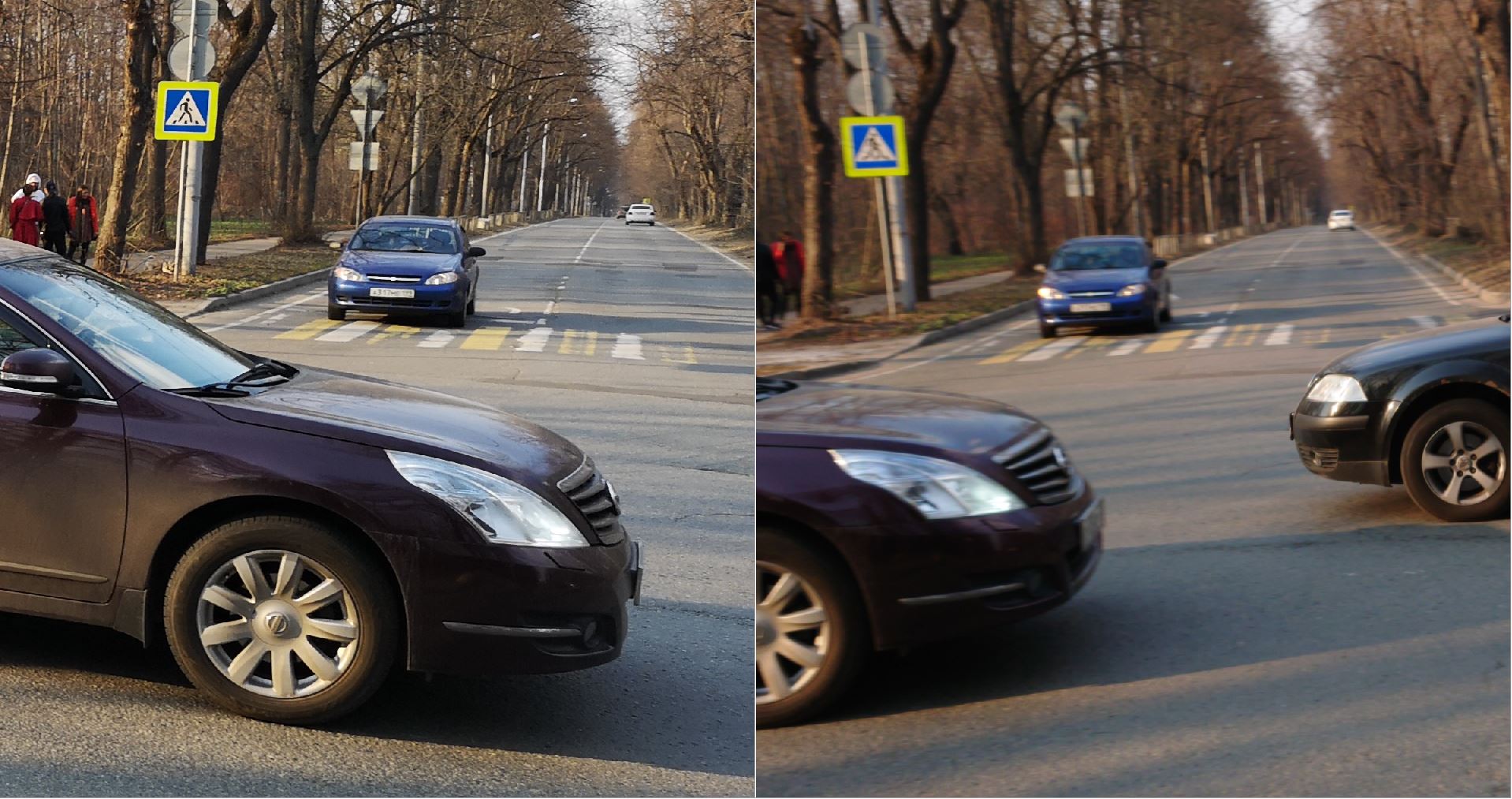

Compare 2, to the left of Huawei, to the right of Sony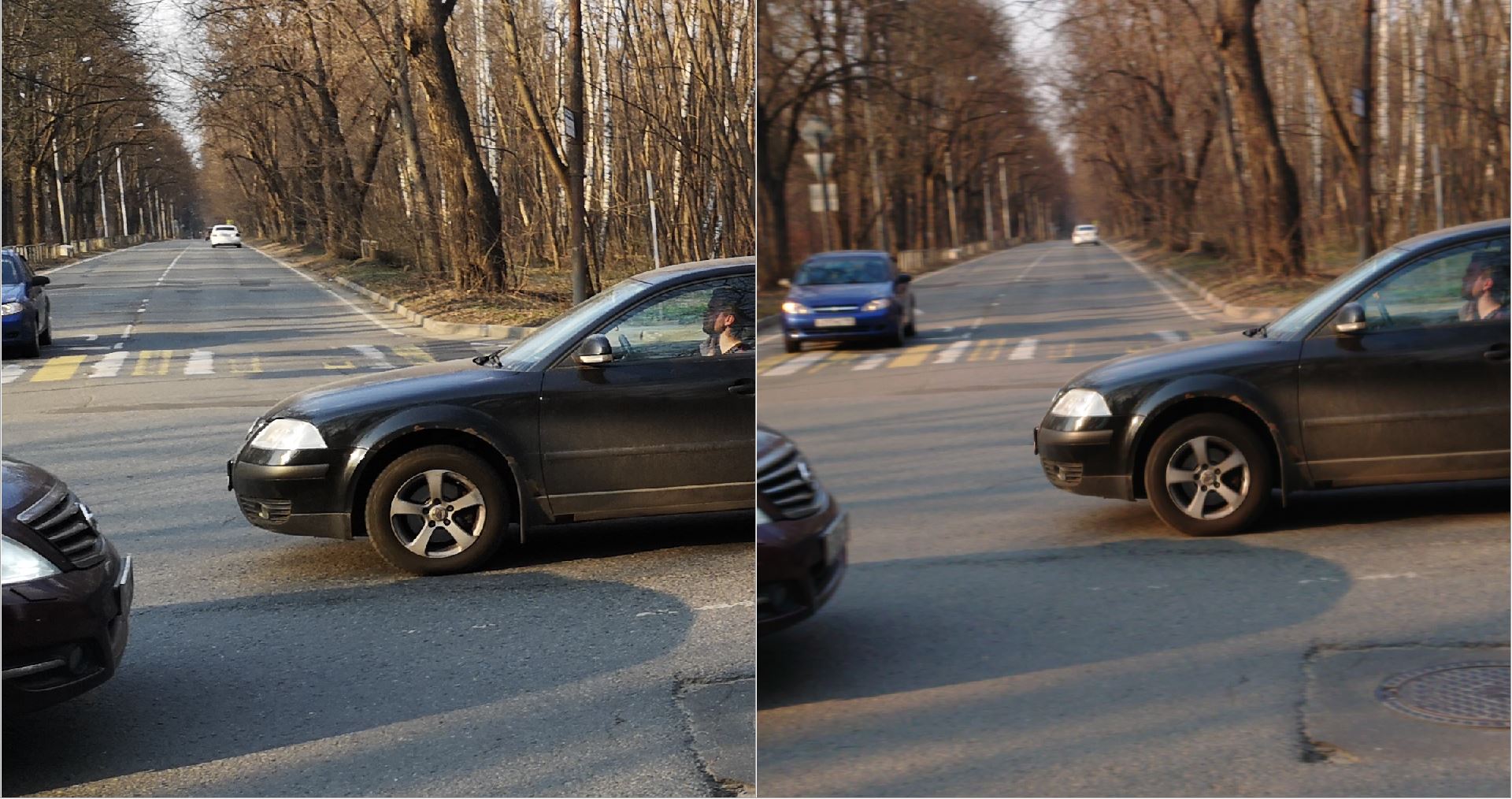

The owner of the Sony XZ2 insists that blurring is an “artistic effect,” but I believe that blurring is primarily due to the physical limitations of the Sony smartphone. As a result, I decided to add a comparison of the same car that was “tracked” when shooting.
HDR mode in the presence of dark and light areas in the picture + night mode
Perhaps one of the most relevant modes for me. Very often I come across a situation where there are some sources of light on the stage (sun, flashlight, reflection from the object, etc.) or different areas have a big difference in lighting (the scene is in the room opposite the window during the day). I certainly would like to compare Huawei with Google Pixel. But unfortunately, I don’t have such a device.
Features modes HDR Huawei P20 Pro
I note that the P20 Pro has actually three HDR modes:
There is another feature that in the RHDR and Night modes, the device creates a picture with rich colors and overestimates sharpness on the border of objects. But this feature is peculiar to many smartphones that I have seen.
- HDR as an option. In my opinion the most unnecessary mode, which seems to work at the program level. In a number of scenarios, there is no sense from him.
- RHDR, works only in automatic mode. Significantly more effective to compensate for dark / light areas compared to the previous one. I believe that in this mode, the device makes the gluing of 2 frames with different shutter speeds. The downside is that it does not always work, so sometimes you have to change the EV for “forcing” the RHDR. Most often, I use this particular HDR mode.
- The "Night" mode, perhaps, is one of the main advantages of the latest Huawei devices. With this option, it is possible to obtain an acceptable image in the absence of any light sources. The downside is that the process of obtaining gluing from several frames takes 5 seconds, which essentially eliminates the possibility of shooting moving objects. For example, also lay out a photo in this mode.
There is another feature that in the RHDR and Night modes, the device creates a picture with rich colors and overestimates sharpness on the border of objects. But this feature is peculiar to many smartphones that I have seen.
Huawei, 10MP Auto / RHDR

Sony, 19MP
Due to limitations 8MB posted a photo on Google Drive
drive.google.com/file/d/1kd5dqiXgWIJ_ILkyQQtPTCU9_qLWAIXl/view?usp=sharing
drive.google.com/file/d/1kd5dqiXgWIJ_ILkyQQtPTCU9_qLWAIXl/view?usp=sharing
Huawei, 10MP Night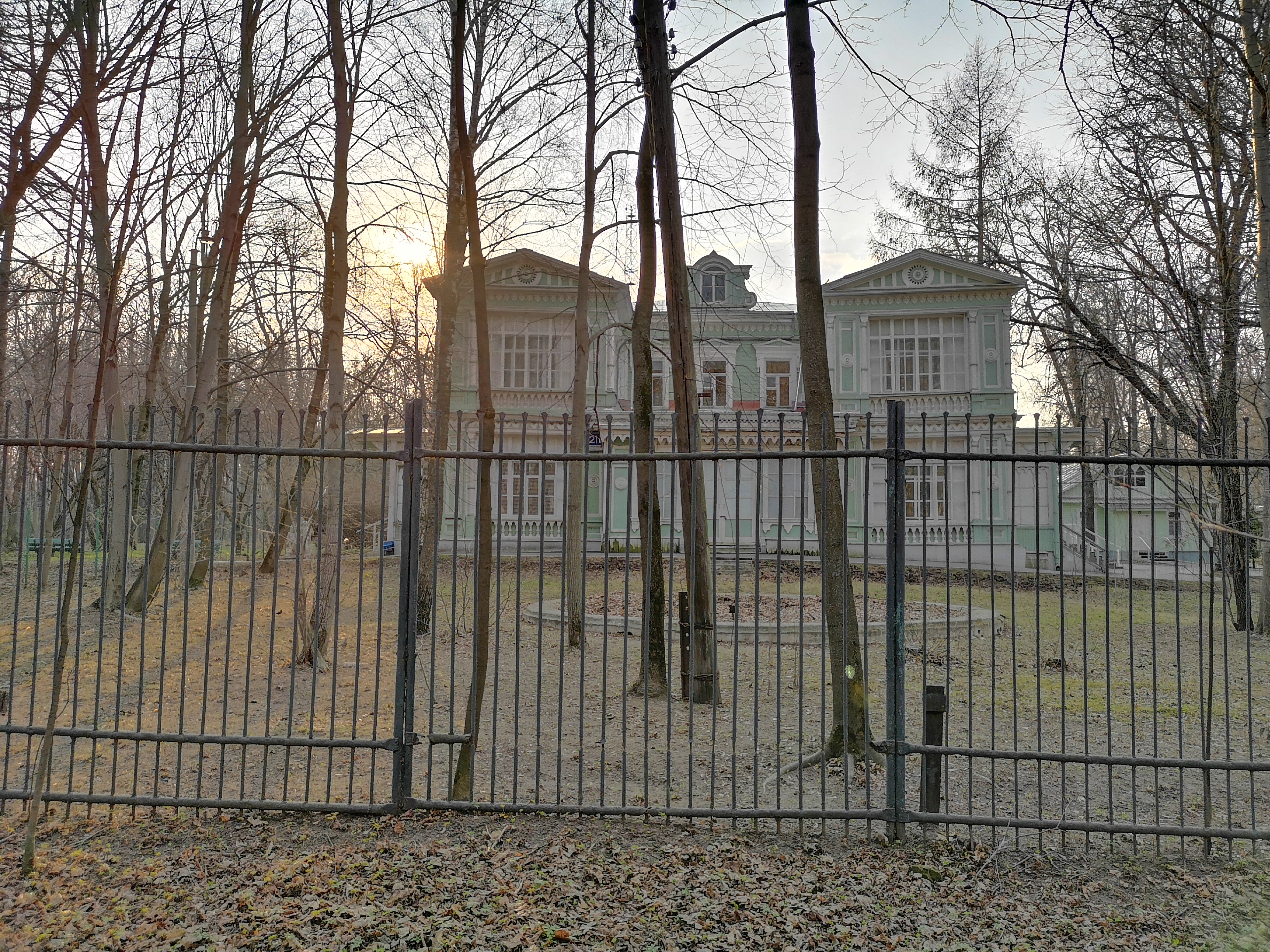

This is the case when the difference can be easily seen with the naked eye.
Compare 1, to the left of Huawei, to the right of Sony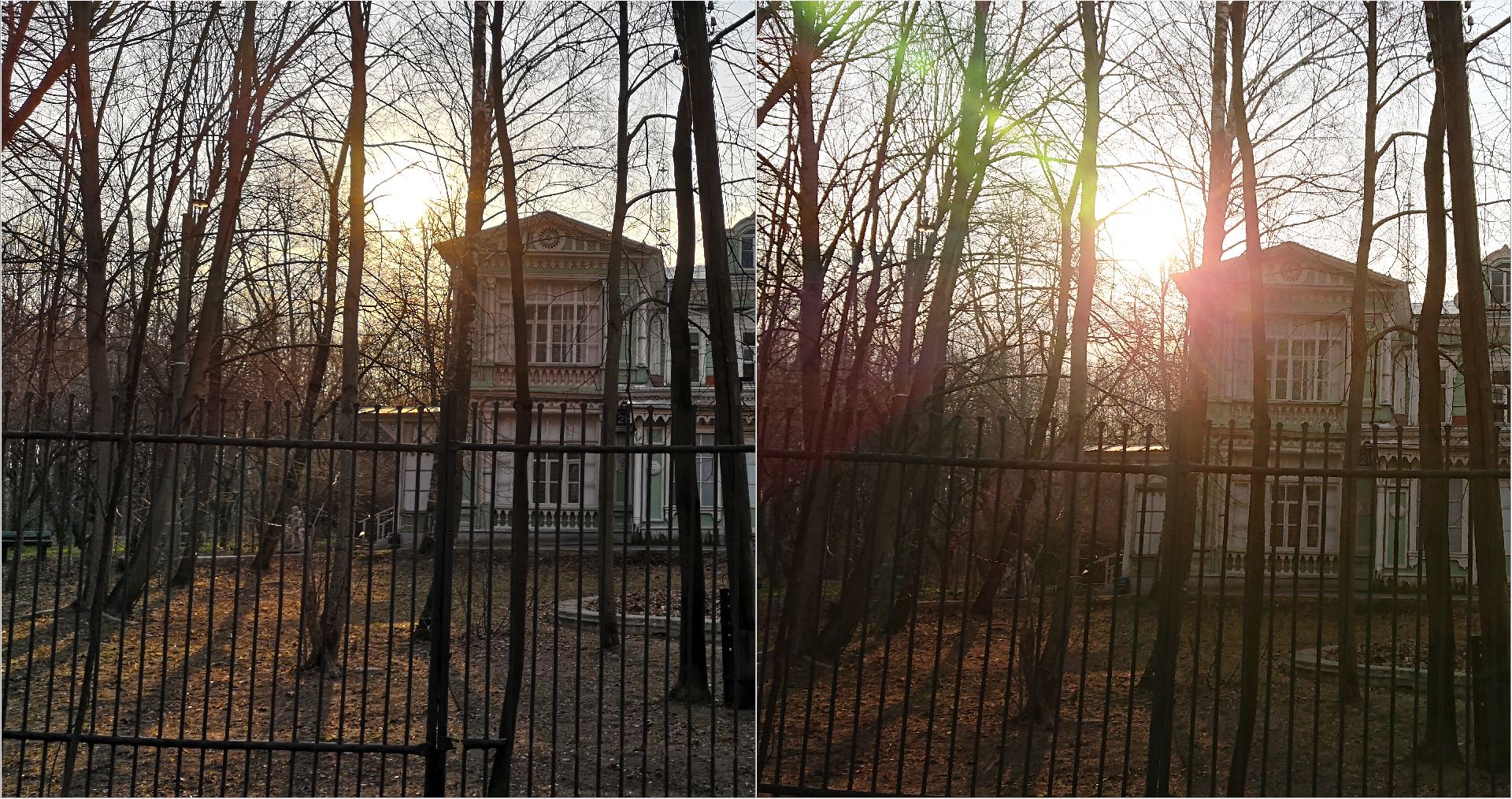

In this case, Sony has visible glare and less quality shadow workout.
Compare 2, to the left of Huawei, to the right of Sony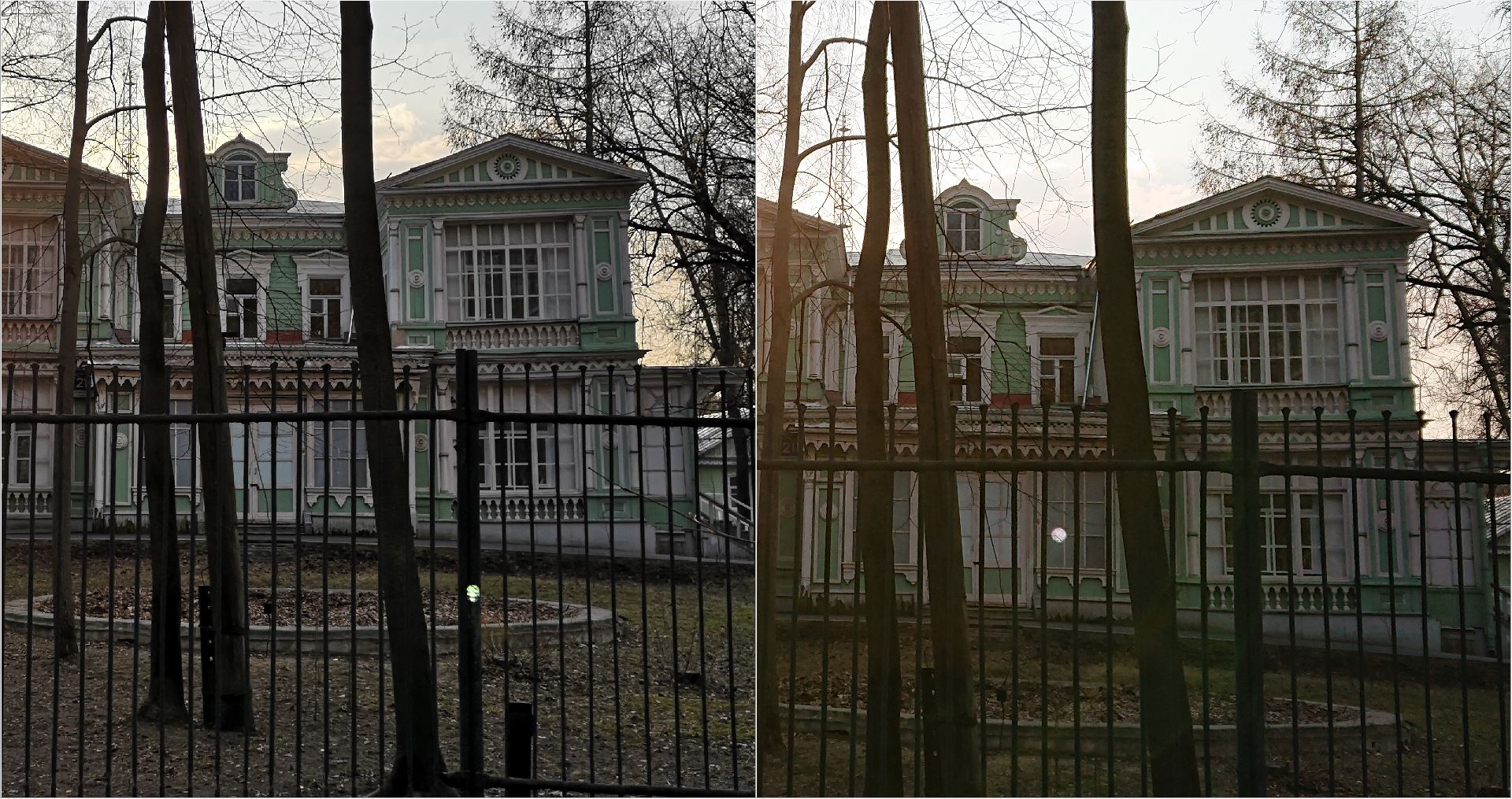

It is easy to see the difference in the correct display of colors, as well as clouds are clearly visible.
Even after viewing the tests with HDR in DxOMark, I immediately saw a poor HDR test. I thought it was inaccurate information, or just a bad photo. But when I saw the results with my own eyes, I became convinced that the dynamic range is the weak side of Sony smartphones.
HDR mode with insufficient lighting mode + night mode
In this mode, a comparison was made Huawei P20 Pro (RHDR and Night) and Sony XZ2 actually at night.
Huawei, 10MP Auto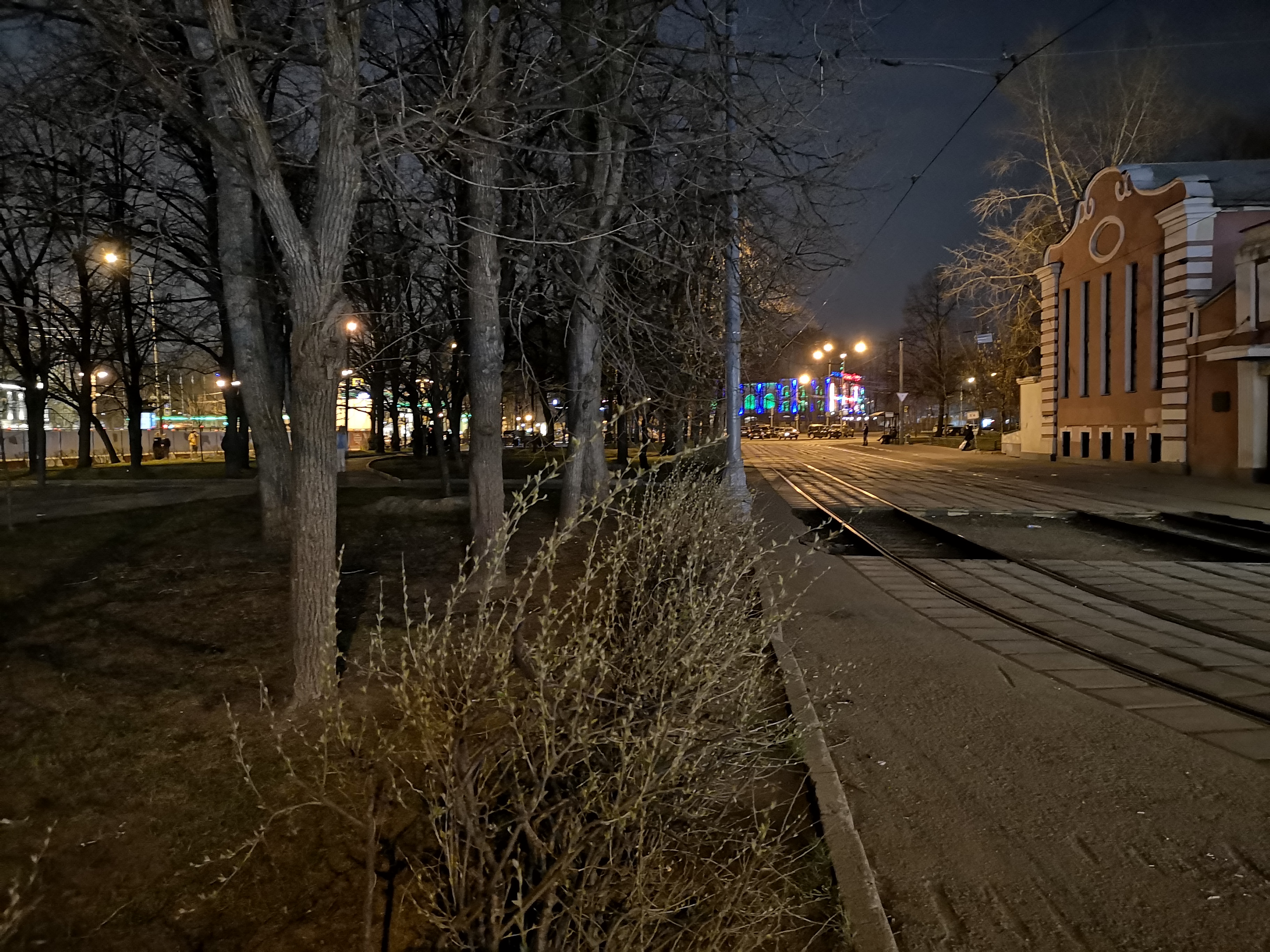

Sony, 19MP
Due to limitations 5000px posted a photo on Google Drive
drive.google.com/file/d/1ka54GmNzSnU1AygKdEyM8jPueGpETabV/view?usp=sharing
drive.google.com/file/d/1ka54GmNzSnU1AygKdEyM8jPueGpETabV/view?usp=sharing
The difference can also be seen very clearly.
Compare 1, to the left of Huawei, to the right of Sony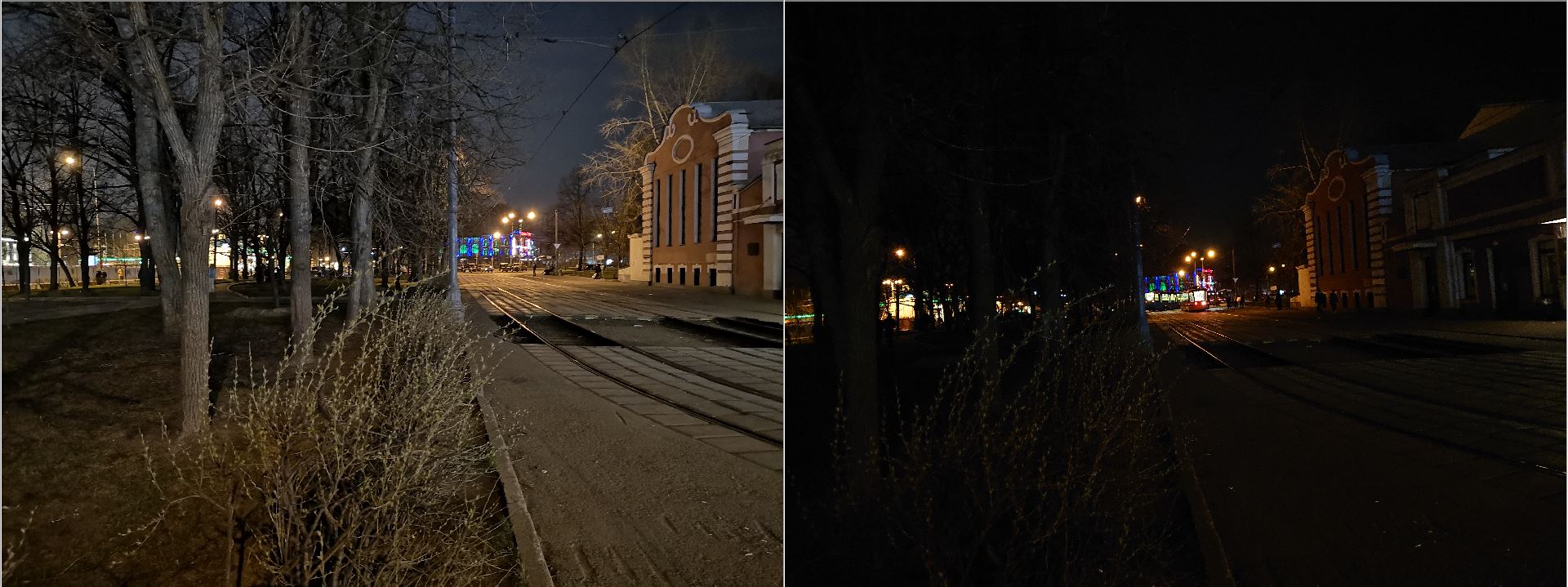

Compare 2, to the left of Huawei, to the right of Sony

Compare 3, to the left of Huawei, to the right of Sony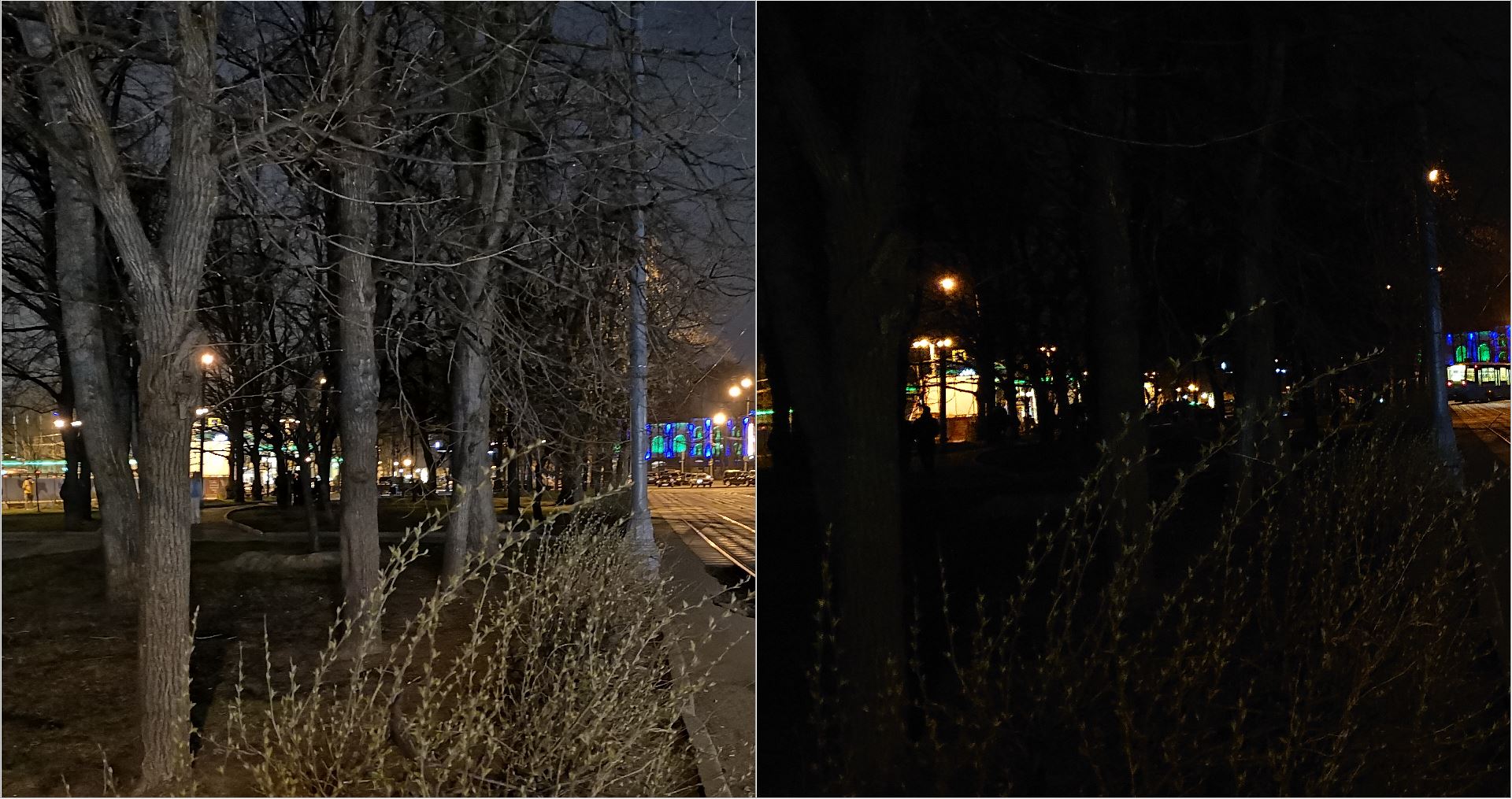

The “Night” mode of the P20 Pro allows you to see what is inside the trams.
Huawei, 10MP Night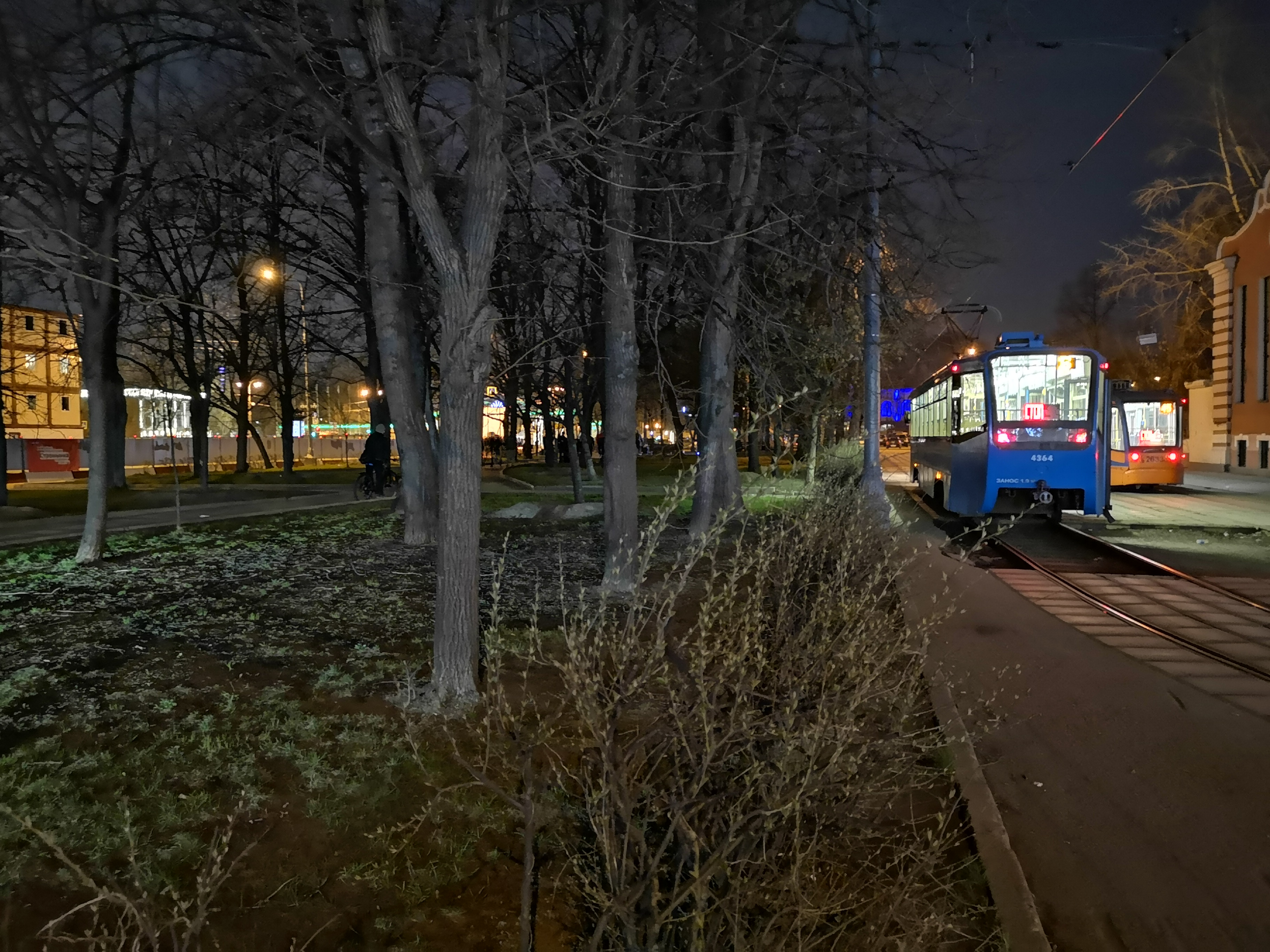

Sony, 12MP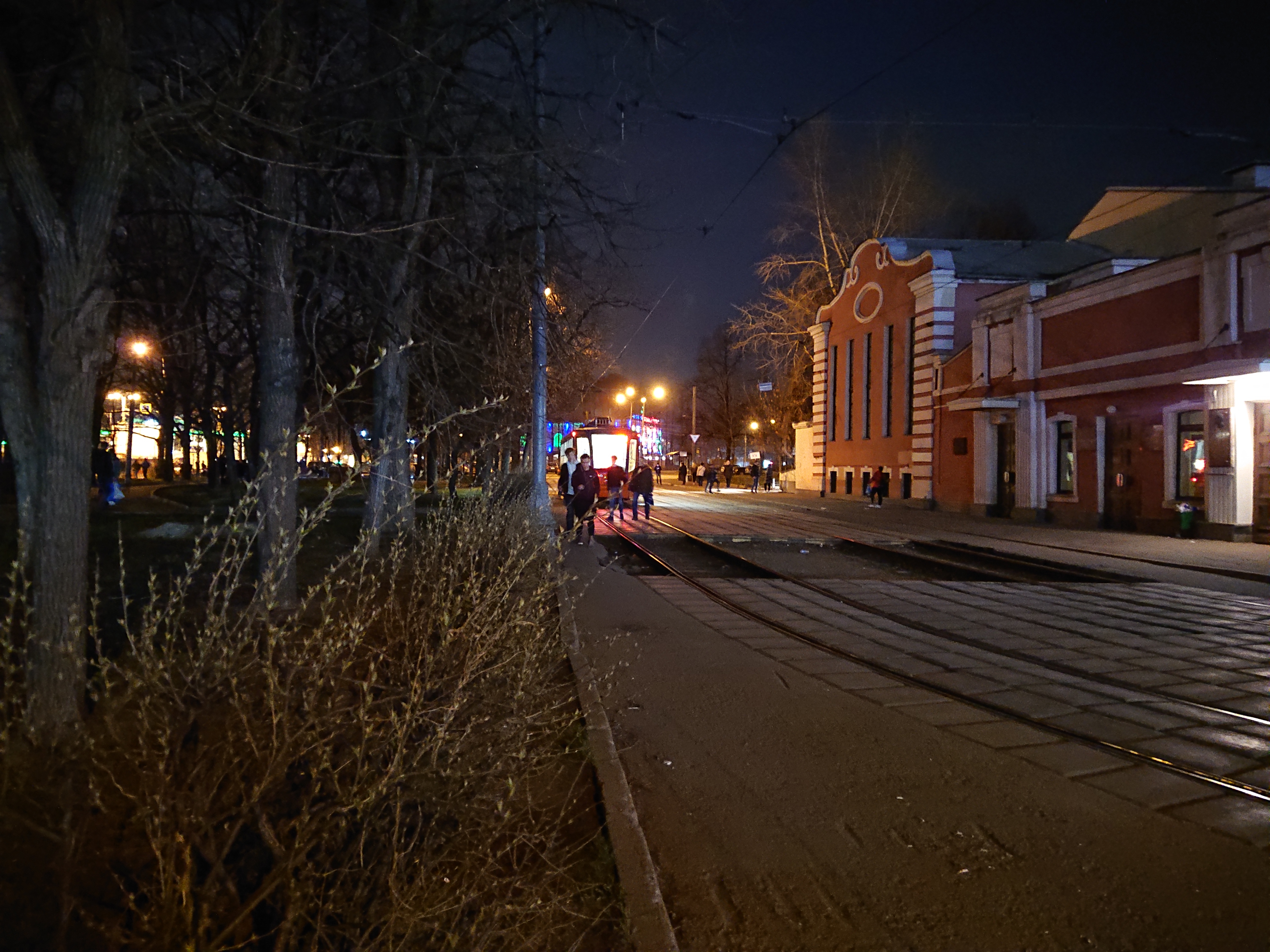

Compare 4, to the left of Huawei, to the right of Sony

Macro shooting
Unfortunately, it was difficult to find something sensible for macro photography, in the end we decided to take a picture on the leaves, on a tree branch.
I decided to use the “Aperture” modes (for the experiment) and “Auto” with AI enabled at 10MP.
Huawei, 10MP, Aperture 0.95, ISO 400, 1/900 s

After playing with the aperture after creating the photo, I realized that for shooting objects near, it is practically useless. Even if you set the option to 0.95, the blur will be stronger than the usual Auto.
Huawei, 10MP Auto, with AI, ISO 400, 1/900 s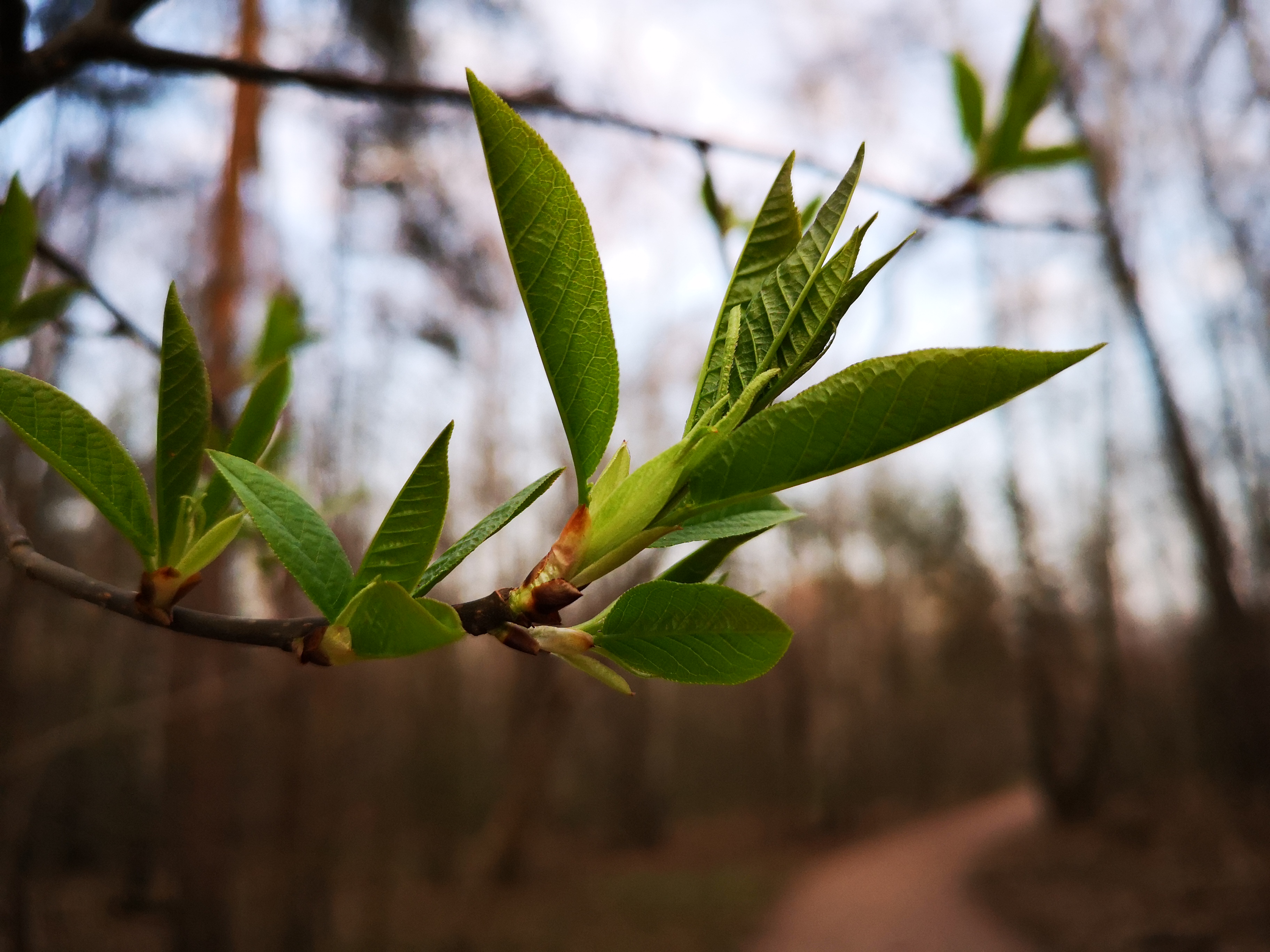

Perhaps this is the rare case when AI really made the picture more “interesting”, albeit less realistic.
Compare, to the left of Huawei, to the right of Sony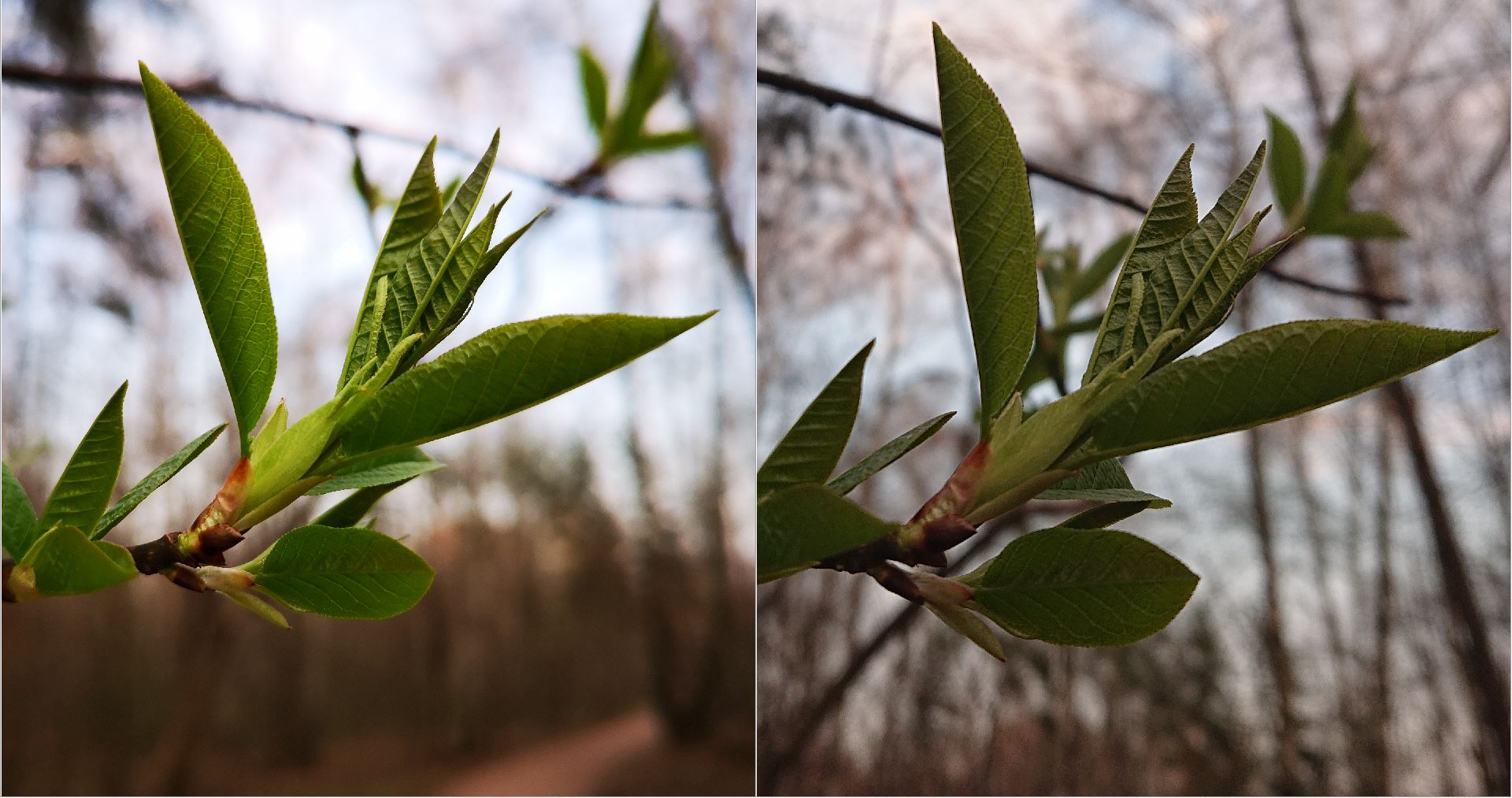

Sony, 19MP Auto, ISO 40, 1/160 s
In this photo, the picture from Sony turned out to be more realistic and slightly more detailed (primarily due to a higher resolution).
I decided not to take a photo in 40Mp mode in this scenario, relying on a wide dynamic range of 10Mp and it turned out how it turned out. I note that on Huawei it is also convenient to make macro using 3x optical zoom, the picture is very detailed. At work he used repeatedly, for example, to obtain markings of small parts on the board. But for the scenario of shooting a leaf on a tree, this mode is not very suitable.
Zooming: 3x, 5x, 10x in the daytime
Perhaps, almost all modern smartphones have at least 2 sensors on the reverse side. One of them is most often a telephoto lens with an increased focal length, which makes it possible to get better-quality images of objects at a remote distance.
The Huawei P20 Pro has 3 sensors: Main 40 megapixel, 8 megapixel telephoto with 3x optical zoom, b / w 20 megapixel.
The Sony XZ2 has only one 19MP sensor, which severely limits the capabilities of the device.
Huawei, 10MP, 3x optical zoom, ISO 40, 1/1131 s

Huawei, 10MP, hybrid mode, 5x magnification, ISO 50, 1/902 s

Sony, 12MP, 5x digital zoom, ISO 40, 1/800 sec

Compare 1, to the left of Huawei, to the right of Sony

Huawei, 10MP, hybrid mode, 10x magnification, ISO 50, 1/803 sec

Sony, 12MP, 8x digital zoom (maximum), ISO 40, 1/250 s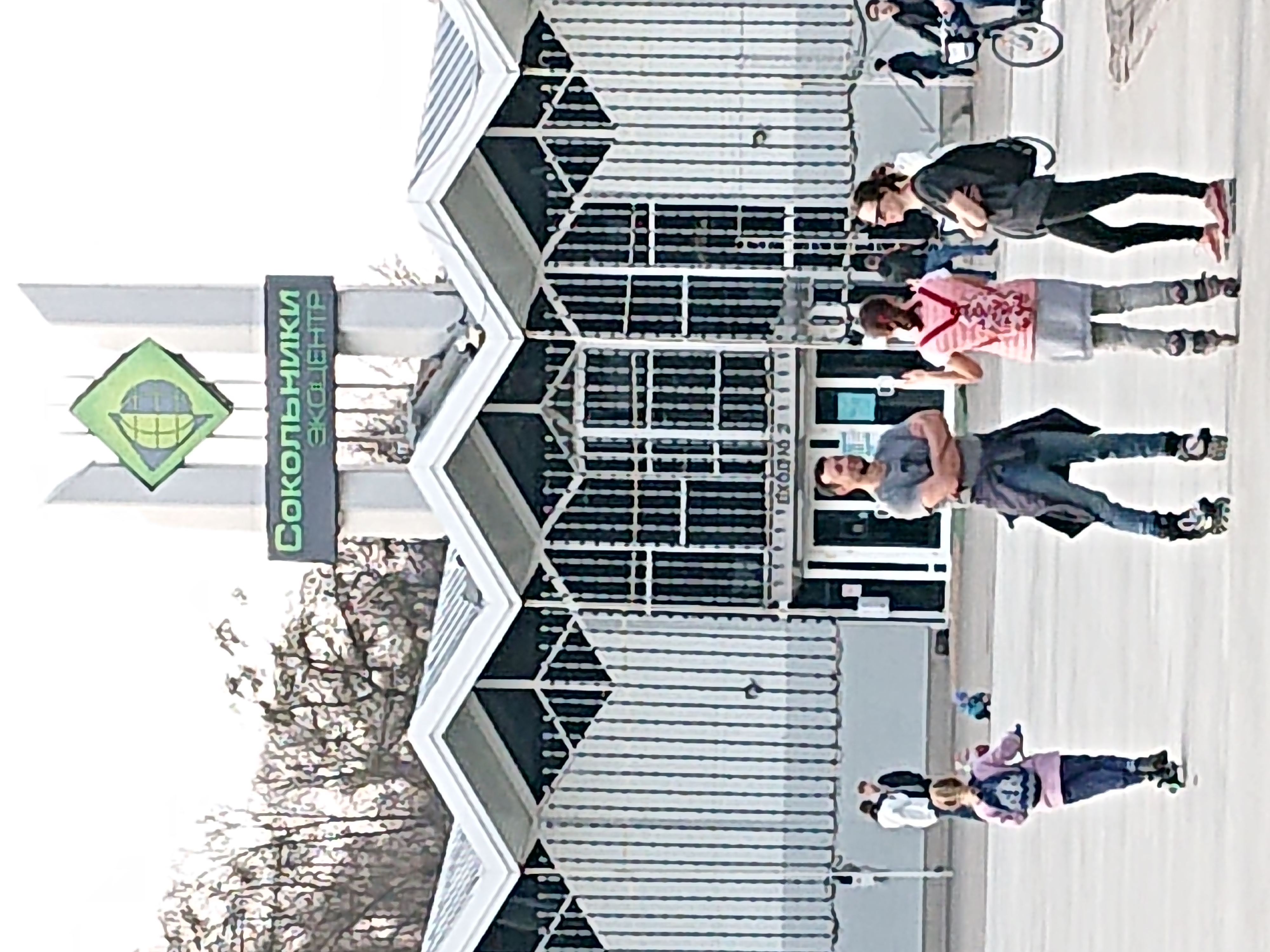

Compare 1, to the left of Huawei, to the right of Sony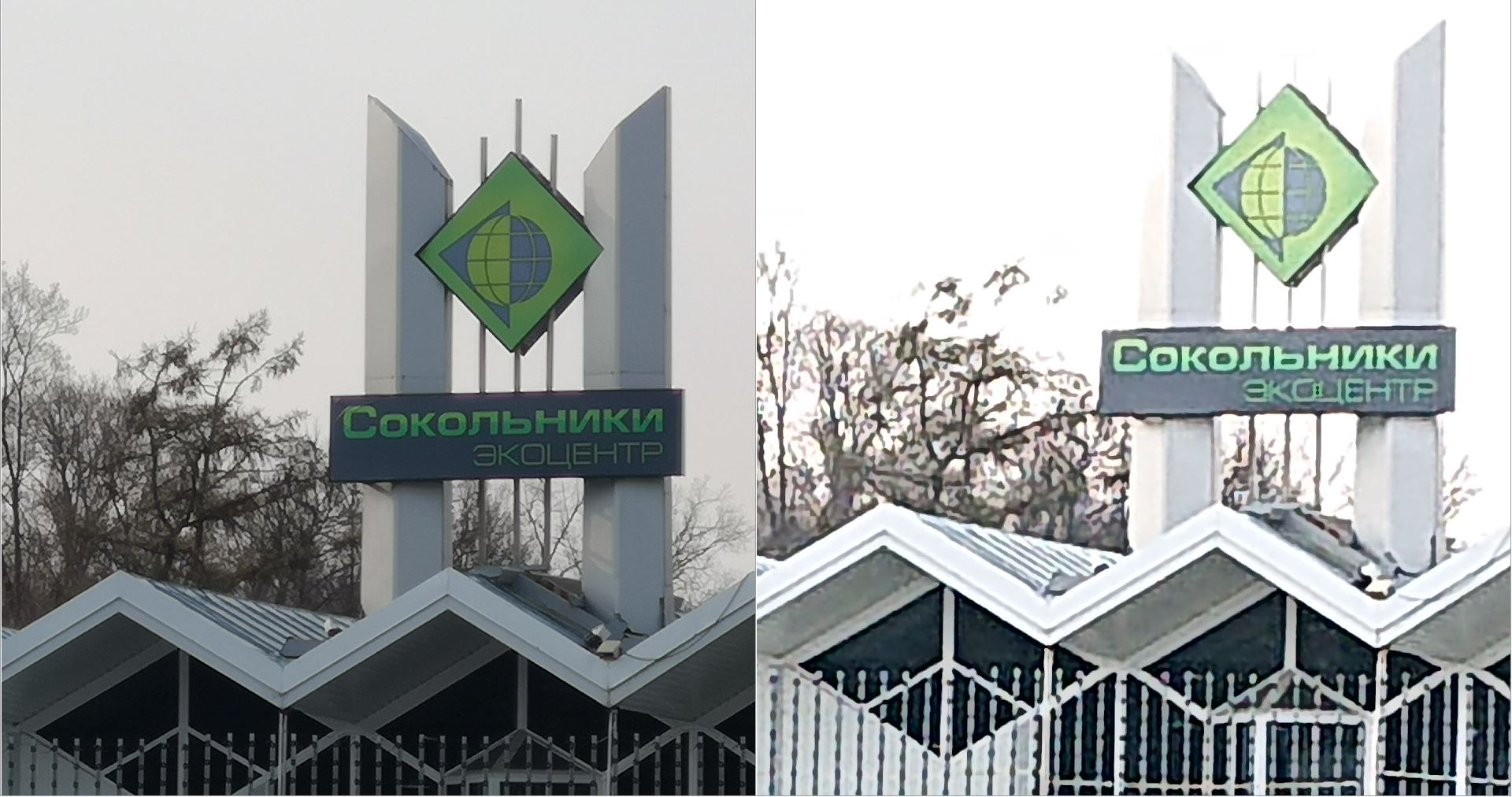

In the pictures that are posted above, the difference between Sony and Huawei is clearly visible.
Interesting observation related to the telephoto lens
Many people will probably think about why you need a telephoto lens with a fairly low resolution of 8Mp, which is 5 times smaller than the main one! The physical dimensions of the matrix for a telephoto lens are also quite modest - 1/4.4 "vs. 1 / 1.73" for the main one. If phones would have lenses, like full-fledged cameras, then there might not be a difference in such conditions between digital and 3x optical zoom. But in all scenarios the telephoto lens was more qualitative than a crop from 40Mp pictures with 3 digital zoom.
Bokeh mode
In my opinion, this is one of the most ambiguous modes in any smartphone.
Huawei, 10MP Bokeh, ISO 50, 1/500 sec

Sony, 8MP Bokeh, ISO 40, 1/476 sec
When posting an image on habrastorage, the photo is displayed with a twist.
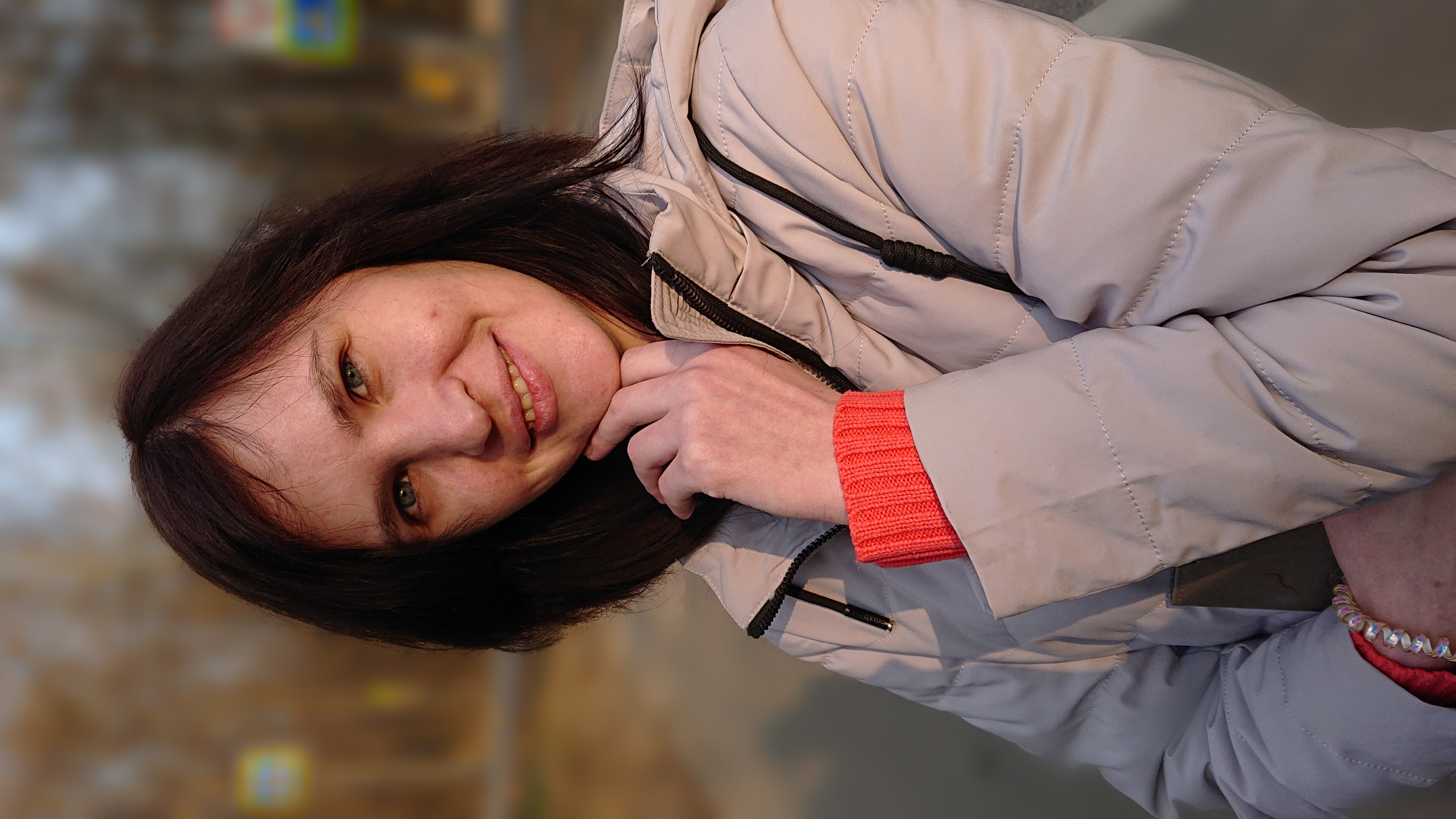

Compare, to the left of Huawei, to the right of Sony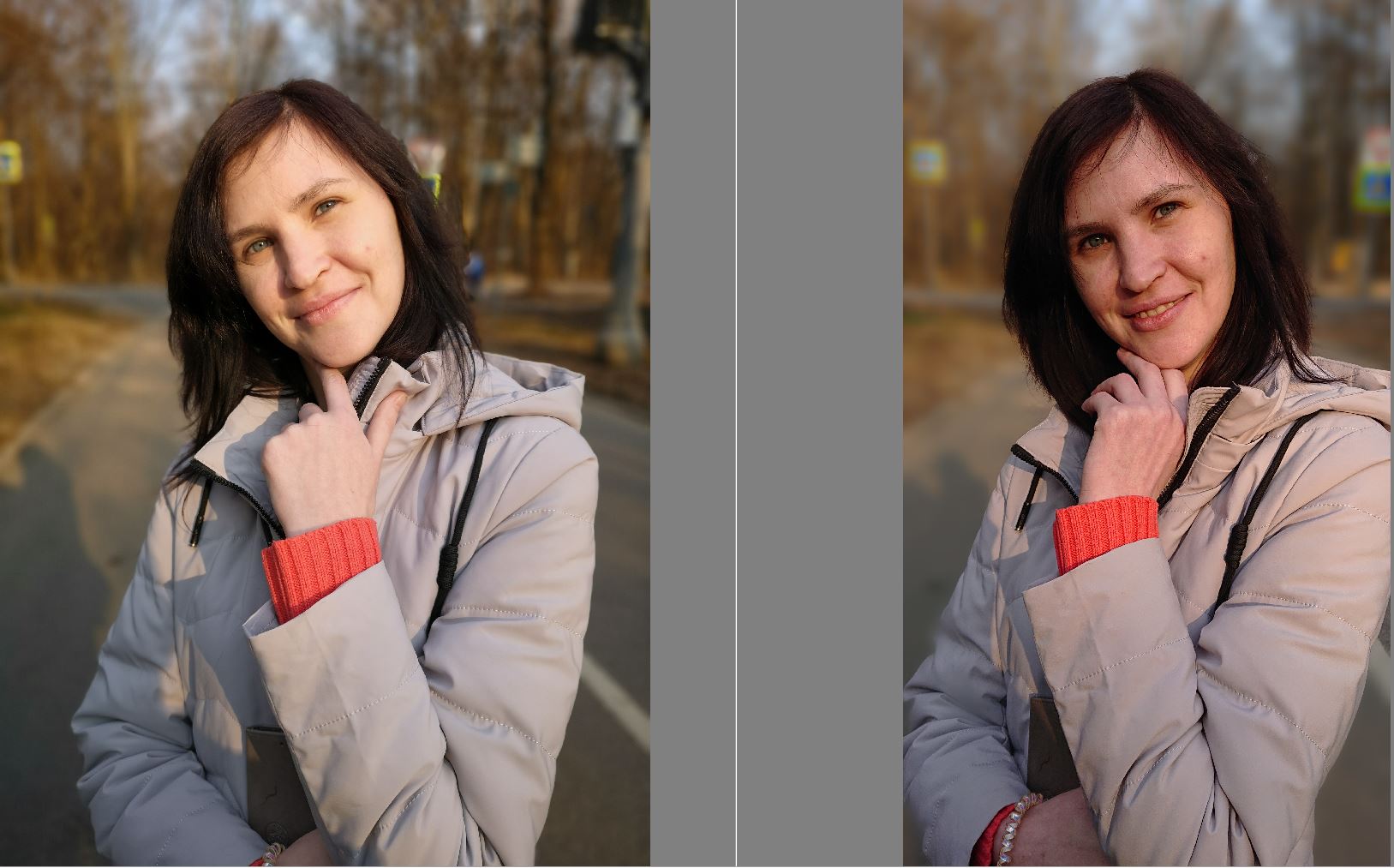

In the photo, Sony has noticeably more "sharpe" and a more "warm" less natural tone.
Huawei, 10MP Bokeh, ISO 50, 1/253 s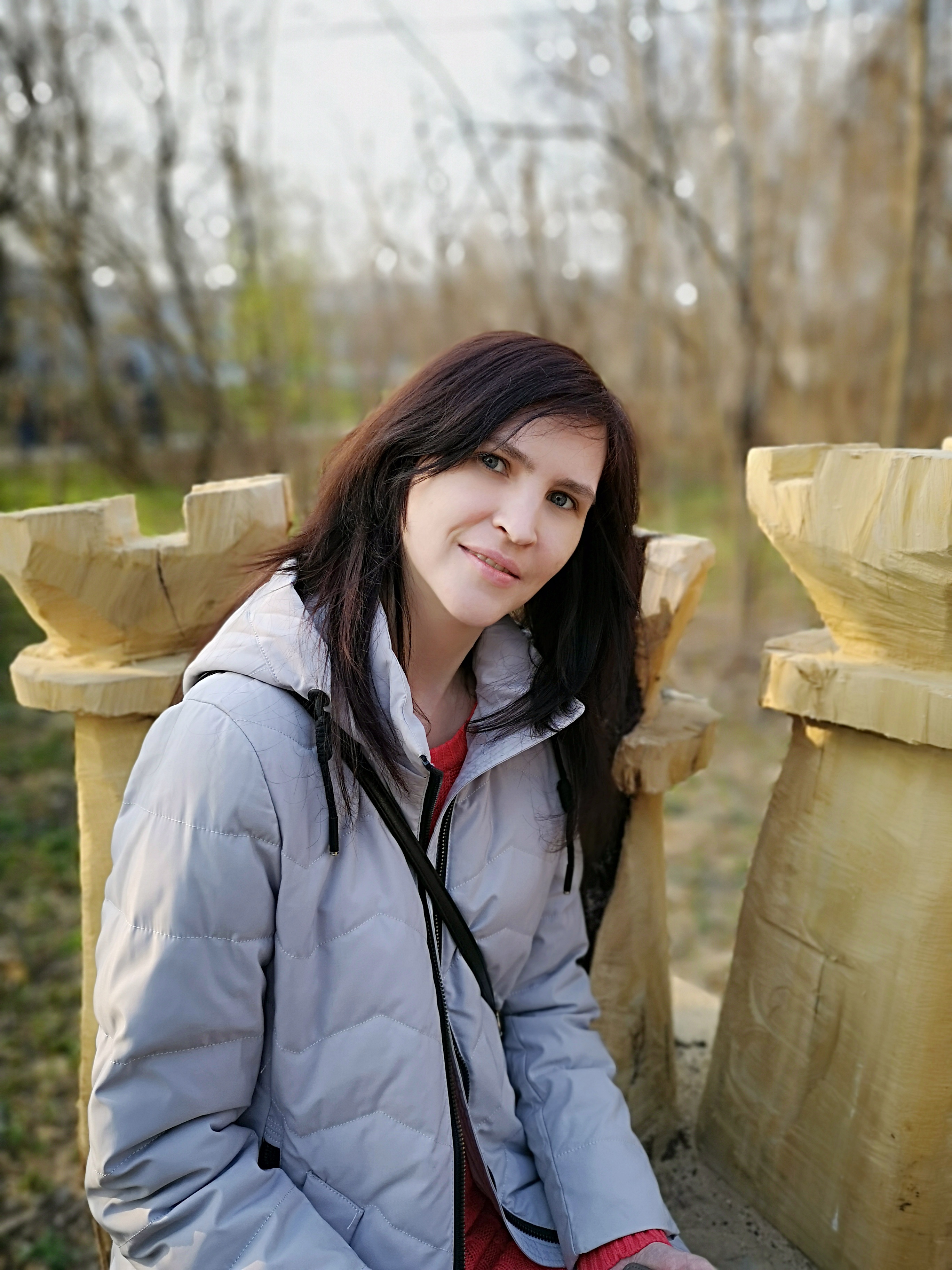

Sony, 8MP Bokeh, ISO 40, 1/175 sec
When posting an image on habrastorage, the photo is displayed with a twist.


Compare, to the left of Huawei, to the right of Sony

I decided to conduct a small experiment, did not remove the “beautification” settings and disable AI on Huawei. In my opinion, the result was very good!
The photo taken on Sony in this case is more natural, and the software did not quite correctly blur the background. Apparently, it affects the presence of only one sensor.
Brief conclusions:
- Modern smartphones with high-resolution sensors do not receive a significant advantage in terms of detail, primarily because of the physical limitations and dimensions of the phone itself.
- The pixel binning technology shows very good results in low light conditions and generally improves the wide dynamic range of the image.
- The presence of a telephoto lens in modern smartphones can significantly increase the quality of photos in those scenarios where there is a need to use zooming.
- The presence of additional. A sensor (in this case B / W) allows you to get better-quality background blur effects. If you close something B / W sensor, then a number of effects will be physically inaccessible.
Personal observations:
- / . , Huawei P20 Pro Huawei Mate 20 Pro. / , Mate 20 Pro . , / — .
- , RAW Adobe. Adobe RGGB.
- Despite the progress in improving the AI performance of Huawei, in most cases the picture is quite “poisonous” in color. I am glad that the function can be turned off, unlike Sony.
Original photographs and crocs are available here:
UPG: corrected several grammatical errors and added a photo with the car during serial shooting, where it is possible to compare the same areas of the moving object being tracked. Also added a photo of the devices themselves on request.
Source: https://habr.com/ru/post/450916/
All Articles